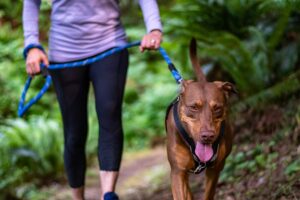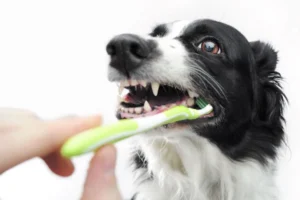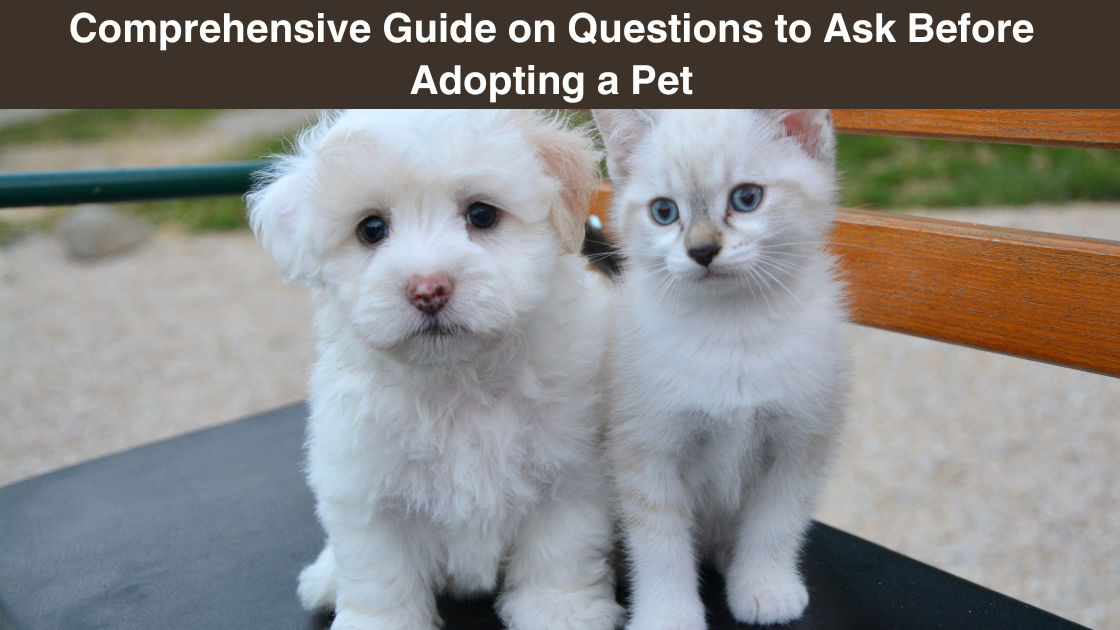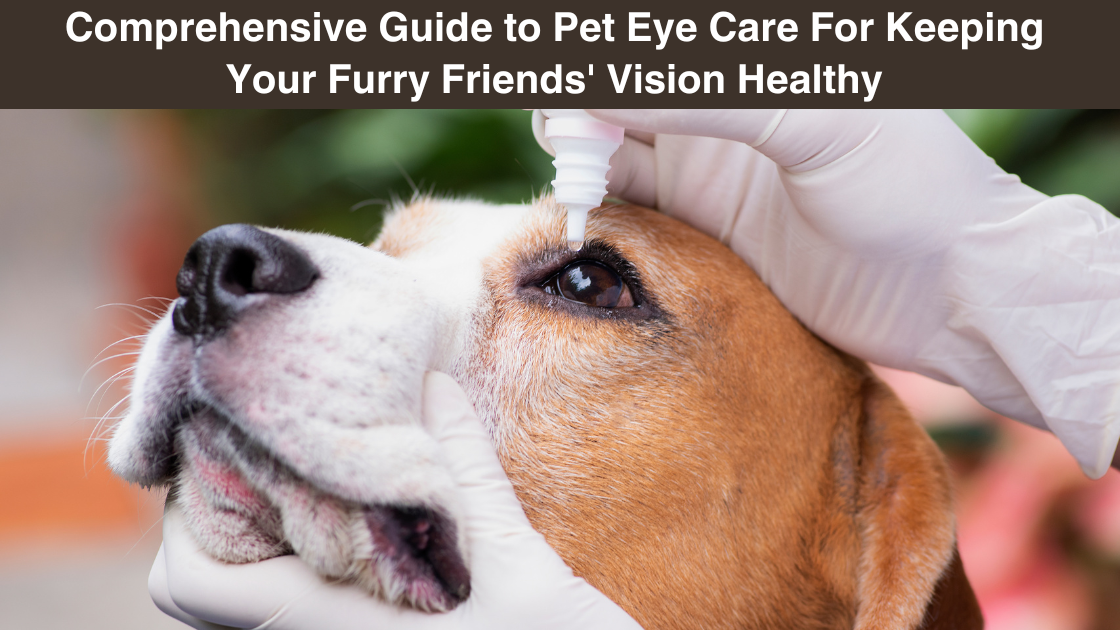132
Do you often think about how you could benefit from having a pet in your family? Do you feel curious about the benefits of adopting a pet when you see one at your friend’s home? Do you often think about how wonderful owning an animal can be? Or how can beautiful bonds be formed between humans and animals?
Table of Contents
Introduction
Well, pets are not “just” animals, as they seem. Their companionship affects the lives of owners in a significant way and the benefits of owning a pet are endless. In this blog, we are going to explore and elaborate on some of the most prominent benefits of having a dog, cat, or any other domesticated animal as a pet in your life.
Prominent Benefits of Owning a Pet
Adopting a pet changes a healthy lifestyle in a significant way. Their addition to your life plays an important role in fighting several mental and emotional issues like depression, anxiety, stress, bipolar disorder, and PTSD. There are many more benefits of having a dog or any other pet; let us elaborate on five major ones.
- Combating Anxiety and Depression

We are living in a fast paced world and almost every individual is overwhelmed with too much workload and commitments. Such a stressful lifestyle invites anxiety and depression. Having a coping mechanism becomes necessary to overcome these psychological problems and adopting a cat or dog offers a great coping solution.
Adopting and caring for a pet helps ease anxiety and build self-confidence. If you are one of those people who feels anxious about going out into the world, having a pet can be a great way to beat such anxiety while avoiding loneliness at the same time. Pets also help you become more mindful and appreciate the joy of the present because they tend to live in the moment and don’t hold grudges from previous days.
- Increasing Physical Activity

The modern lifestyle is also popular as a sedentary lifestyle. Lack of physical activity causes many health issues and makes individuals feel older than they are. Being physically active optimizes weight, improves brain health, strengthens bones and muscles, lowers the risk of disease, and also improves your ability to do daily activities.
Keeping a pet helps you stay fit and healthy. When you regularly take a pet, like a dog, for a walk, hike, or run, you include healthy daily exercise into your schedule. Such activity is great for the animal and proves to be a fun and rewarding way for you to stay fit. As a pet owner, you are more likely to meet your daily exercise requirements.
- Providing Companionship

In this fast-paced world, finding a close companion is tough. Extended isolation and loneliness often trigger symptoms of depression. Companionship combats the feelings of loneliness and is essential for a pleasant and fulfilling life. It increases a sense of purpose, helps prevent illness, and even adds years to your life. Companionship is one of the most significant benefits of having a dog or any other pet.
Offering your time and care to a pet not only helps you overcome loneliness but also makes you feel needed and wanted. Their companionship offers an opportunity to shift your focus away from problems that may cause depression. Many pet owners talk to their dog or cat; pets also respond by wagging their tail (or maybe purring if it is a cat). Such behavior can make anyone feel delighted and content at the moment.
Note: There might be affiliate links mentioned here. We may receive a commission if you purchase a product through an affiliate link. There is no additional charge for you. Please do your own research before making any online purchases.
- Helping to Socialize More

Humans are social animals and socialization is important to maintain the fabric of humanity. When you meet and spend time with other people in a friendly way, you enjoy your life in a true way and make it fulfilling. However, modern lifestyles are making it difficult for individuals to socialize with others but having a pet can help overcome this issue. More socializing or meeting new friends is one of the major benefits of owning a pet.
Pet care helps you meet new people. They offer a viable reason to socialize and can be great assets for their owners to start and maintain new friendships. Pet owners often stop and initiate conversation when they meet other pet owners while on walks, hikes, or in a dog park. You also meet new people in pet stores, clubs, and training classes due to your pet.
- Adding Stability to Your Routine

Randomness in your daily routine deteriorates the quality of your life. A well-structured and purposeful life is necessary for your mental as well as physical well-being. You should have a predetermined objective to follow every day. While seeking out ways that can add stability and direction to your life, adopting a pet can offer a viable solution.
Most pet animals, especially dogs, require a set of certain duties on a regular basis, such as feeding, walking, playtime, and excretion schedules. Accomplishing all these pet care needs adds consistency to your daily routine. Following a routine is necessary to keep your pet sane and calm, and it also helps you gain peace of mind.
Conclusion
A pet animal, be it a dog, cat, or some other domesticated animal, adds a whole new dimension to your life when you adopt them. They bestow a sense of stillness on your psyche. No matter what kind of mood you may be having at the end of the day—depressed, anxious, or stressed—one simple look from your pet can calm you down.
When you adopt a pet, you’ll have to get out of bed to feed, exercise, and care for them. This care and grooming effort not only makes your pet feel a sense of belongingness but also makes you feel valued too. You get many opportunities to socialize more and make new friends due to them. Don’t miss out on these amazing benefits of owning a pet; get one (or more) for yourself and your family today.
Adopting a pet is a big, life-changing decision. It is a long-term commitment that can last a decade or more. There are various elements to consider before adopting a pet for your lifestyle to ensure that you make an informed and responsible decision.
Table of Contents
Introduction
This essay delves into the critical questions you should ask yourself and think about before adopting a pet. Whether you want to adopt a dog, a cat, a bird, a rabbit, or any other animal, the basics of responsible pet ownership remain the same. With over 67% of US families owning pets, it’s critical to ensure you’re prepared to take on the obligations of pet ownership.
What makes you want a pet?

Before delving into the logistics and practicality of pet ownership, you should think about your goals. Understanding your motivation for wanting a pet will help you make a better educated selection.
Are you looking for company, unconditional love, or someone to spend your life with? Do you want a pet for emotional support, security, or to teach responsibility to your children? Knowing your reasons might help you choose the correct type of pet and prepare for the responsibilities that come with it.
What kind of pet is right for you?

Your lifestyle has a big impact on the kind of pet that will be right for you. Take a look at the following:
Activity level: Are you an active person who appreciates outdoor activities, or do you prefer a more laid-back way of life? Some pets, such as dogs, require daily exercise, while others, such as cats, may be more independent.
Living Space: Do you live in an apartment or a large house with a yard? This will have an impact on the size and breed of pet you can comfortably accommodate.
Allergies: Do you or any members of your household have allergies to pet dander? This will influence your selection of hypoallergenic pets.
Travel: How frequently do you travel? Some pets may be more understanding of your travel plans than others.
Time commitment: Are you willing to invest the time required for your pet’s training, grooming, and daily care?
Are you able to afford a pet?

Owning a pet has financial obligations. Assess your budget before adopting to ensure you can easily pay for your pet’s requirements. Consider the following expenses:
- Food
- Veterinary services
- Grooming and grooming products
- Obedience and training classes
- Toys and enrichment
- Insurance for pets
- Fees for licenses and registration
- Immediate medical attention
- If you are on vacation, boarding or pet-sitting
- Miscellaneous costs
It is critical to maintain an emergency fund in case of unforeseen medical bills. Veterinary expenditures can quickly mount up, so having a financial safety net in place is critical.
Where are you going to get your pet?
There are various options to consider when adopting a pet for your lifestyle:

Animal Shelters: Adopting from a shelter or rescue organization is a wonderful way to help animals in need. Many great creatures are waiting in shelters for loving homes.

Breeders: If you’re keen on a specific breed, you can buy from a respectable breeder. Make sure to do your homework and choose a reputable breeder.

Pet Stores: While some pet stores provide pets for adoption, it is critical to study their sources and verify they adhere to ethical and humane methods.
Private Individuals: You may encounter people trying to rehome their dogs. In this scenario, inquire about the pet’s past and the grounds for rehoming.
Choosing a trusted source is critical to ensuring your future pet’s health and well-being.
Are you prepared to make a commitment?

Pets are not disposable; they are companions for life that rely on you for their well-being. Before you adopt, consider whether you are ready for the long-term commitment that comes with pet ownership. Consider the following time frame:
- Dogs: Depending on the breed and size, dogs can live for 10–15 years or longer.
- Cats: Cats have a lifespan of 15-20 years or more.
Your dedication to caring for your pet should last their entire life. This includes giving them love, attention, and medical care as they grow older.
Are you prepared for the training and socialization?
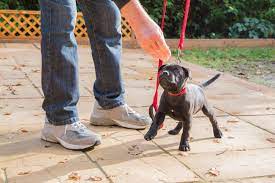
To become well-behaved and confident companions, most pets, particularly dogs, require training and socialization. Consider whether you are willing to devote time and effort to:
- Litter training or housebreaking
- Fundamental obedience training
- Interaction with other animals and humans
- Dealing with behavioral difficulties or fears
- Think about whether you have the ability and patience to train your pet on your own or if you’ll need the assistance of a professional trainer.
What type of housing do you have?

Your living condition has a big impact on your pet’s comfort and well-being. If you are renting, inquire about the pet policies of your landlord or housing association. Make sure your living area can suit your chosen pet’s individual needs, such as space, safety, and facilities.
Do you have any children or pets?
If you have children or other pets, you should think about how they will get along with your new pet. Not all pets get along, and some may have special needs when it comes to dealing with youngsters. It is critical to maintain a harmonious environment for all parties concerned.
What are your pet’s physical and emotional requirements?
Different pets have different requirements, such as:

Dietary needs: Learn about what your pet should consume, including portion quantities and frequency.
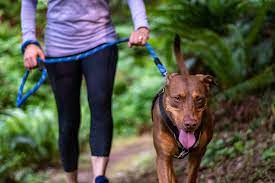
Exercise requirements: Determine how much physical exercise your pet needs to stay healthy.
Mental stimulation: To avoid boredom and behavioral concerns, many pets require mental challenges and enrichment.

Veterinary care: Regular check-ups and vaccines are critical for the health of your pet.
Do you have a plan for the unexpected?
Life is full of surprises, and unexpected events might occur. Are you ready for:

Medical emergencies: Accidents and diseases can occur at any time, and medical costs can be prohibitively expensive. Do you have a plan in place to cover unforeseen expenses?
Changes in lifestyle: Can you alter your life to suit your pet when circumstances change, such as relocating or changing jobs?
Do you have enough time for your pet?

Pets demand time and attention. Examine your daily schedule to see if you can commit to:
- Grooming, feeding, and cleaning up after your pet
- Providing physical activity, play, and interaction
- Investing time in training and socializing
- Making regular veterinary appointments
Have you considered the emotional aspects of pet ownership?
Emotional challenges come along with the joy of adopting a pet for your lifestyle. Be ready for:

The unavoidable loss: Because pets have shorter lifespans than humans, grieving their loss can be emotionally taxing. Are you prepared to face this unavoidable aspect of pet ownership?
Responsibilities: Are you emotionally prepared to care for your pet, including their health, happiness, and well-being?
Changes in lifestyle: Your pet may have an impact on your lifestyle, reducing your ability to travel or participate in certain activities. Are you prepared to make these changes?
Are you familiar with the local laws and regulations?
Check your local pet ownership rules and regulations. This can include licensing and immunization requirements, leash rules, breed limitations, and noise ordinances. Compliance with these laws is critical for responsible pet ownership.
Are you prepared to pay the price?

Pet ownership expenditures go beyond the initial adoption or purchase. You should budget for:
- Provisions and food
- Veterinary care on a regular basis
- Unexpected medical expenses
- Pet insurance (optional but strongly advised)
- Grooming and hygiene items
- Fees for licensing and registration
- Pet boarding or sitting (if you travel)
Budget for these expenses ahead of time to reduce your financial burden and ensure your pet’s well-being.
Note: There might be affiliate links mentioned here. We may receive a commission if you purchase a product through an affiliate link. There is no additional charge for you. Please do your own research before making any online purchases.
Can you plan for the future of your pet?

You should have a plan in place for your pet’s future as a responsible pet owner in case something happens to you. Consider:
Appointing a caregiver: Select a responsible and willing friend or family member to care for your pet if you are unable to.
Legal documents: Make a will or trust that details your preferences for your pet’s care and finances.
Emergency contacts: Include specific instructions and contact information for your pet’s care in the event of an emergency.
Have you done any research on the breed or species?

Before adopting, it is critical to conduct research about the breed or species of interest. Each has its own set of traits, care needs, and potential health risks. Discover their personality, temperament, and whether they are a suitable fit for your lifestyle.
Are you capable of handling the mess and taking responsibility?
Pets can be dirty, shedding hair, creating excrement, and occasionally inflicting damage. Are you prepared to take on the job of cleaning up after your pet and keeping your living space clean?
Do you have any allergies or health issues?

Consult a healthcare expert before adopting a pet if you or a family member have allergies or underlying health concerns. Some animals may cause allergies or aggravate certain medical issues.
Are you ready for the job?
Pet ownership is a labor of love. Meeting your pet’s needs takes time and effort. Are you prepared to put in the effort required to feed, groom, train, and maintain your pet’s overall health and happiness?
Are you willing to commit to regular exercise and play?
Pets require physical and mental stimulation in order to remain healthy and happy. Are you willing to exercise and play with your pet on a regular basis? This is particularly crucial for dogs, as many breeds require regular exercise to be happy.
What are the ethical constraints?
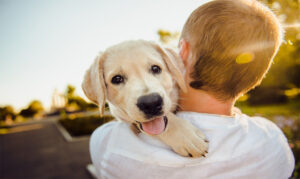
Consider the following ethical implications of pet ownership:
Adoption vs. Purchasing: Adopting from a shelter or rescue group is frequently regarded as a more ethical option because it gives a home for animals in need.
Spaying or neutering: Part of responsible pet ownership is spaying or neutering to help regulate the pet population and reduce the number of abandoned animals.
Choose a Breeder: Choose a breeder who follows ethical breeding procedures and prioritizes the health and well-being of the animals if you decide to buy from one.
Adopting an Elderly Pet: Senior pets are sometimes disregarded in favor of puppies and kittens. Consider providing a caring home for a senior pet.
FAQs
What is the significance of adopting a pet?
Getting a pet is a big decision because it requires a long-term commitment that can last a decade or more. It’s not just about having a cute companion; it’s also about accepting the responsibility of caring for a living thing.
What should I think about before getting a pet?
You should think about your reasons for acquiring a pet, your lifestyle, your financial readiness, and the emotional components of pet keeping.
Why is it crucial to understand your motivation for acquiring a pet?
Understanding your reasons allows you to select the correct type of pet and prepare for the duties that come with it. It guarantees that your expectations and the realities of pet ownership are in sync.
How does my way of life influence the type of pet I should get?
Your lifestyle has an impact on variables such as the pet’s activity level, space needs, allergies, and travel compatibility. It is critical to select a pet that fits into your everyday routine.
What are the financial obligations associated with pet ownership?
The costs of pet ownership include food, veterinarian care, grooming, training, insurance, licensing, and emergency medical treatment. An emergency fund is necessary for dealing with unexpected bills.
How can I get a pet?
You can adopt from animal shelters, find a responsible breeder, shop at pet stores (while confirming their origins), or discuss rehoming with private individuals. It is critical to select a reliable source.
Why is it necessary to know a pet’s life expectancy?
The life expectancy of a pet affects the long-term commitment necessary for their care. It is critical to treat them with love, attention, and medical care for the rest of their lives.
Is it necessary to train and socialize all pets?
To become well-behaved and confident companions, most pets, particularly dogs, require training and socialization. You should expect to devote time and effort to this element.
How do my living circumstances affect my ability to possess a pet?
Your living situation might have an impact on your pet’s comfort and well-being. If you’re renting, check with your landlord regarding pet policies and make sure your living area is suitable for your pet.
What should I think about if I have kids or other pets?
If you have children or other pets, make sure your new pet will get along with them. A pleasant atmosphere requires compatibility and safety.
Conclusion
Adopting a pet is a big step that should not be taken lightly. It is a commitment to provide a living being with love, care, and a safe home for the rest of its life. You may make an informed decision and ensure a good and fulfilling experience as a responsible pet owner by asking the crucial questions listed in this article.
Before bringing a pet into your home, consider your goals, lifestyle, financial readiness, and degree of commitment. Remember that pet ownership is more than simply fun and companionship; it also entails accepting the duties of caring for a vulnerable and dependent being. You may provide a loving and lasting home for a pet with careful planning and consideration, assuring a mutually gratifying experience for both you and your new friend.
Our pets are valued family members who provide us with company, love, and loyalty. Every conscientious pet owner prioritizes their pet’s well-being, and one crucial part of their health that is frequently forgotten is eye care. Because a pet’s eyes are not just windows to their soul but also key sensory organs, it is critical to monitor their ocular health.
Table of Contents
Introduction
We will look at common eye disorders in pets, preventive strategies, and when to seek expert treatment in this comprehensive guide to pet eye care. By the end of this article, you’ll be better prepared to keep your pet’s vision and overall quality of life.
Anatomy of Eye of a Pet

Every conscientious pet owner must understand the delicate structure of their pet’s eye. While the eyes of dogs and cats share many similarities with human eyes, there are also significant variances, and understanding these differences is essential for effective eye care.
The Cornea: The cornea, also known as the “window to the soul,” is the clear, outermost layer of the eye. This tiny structure acts as a translucent armor, protecting the inner ocular components from injury. Furthermore, it is responsible for bending and focussing incoming light, guiding it further into the eye, where it is processed for vision.
The Iris: The iris, which is the colored component of the eye, is located just behind the cornea and serves as the eye’s aperture. The iris, like a camera’s diaphragm, controls the quantity of light entering the eye by adjusting the size of the pupil. This dynamic process aids in maintaining excellent vision in a variety of lighting conditions.
The Lens: The lens is located just beneath the iris and functions as the eye’s lens system. It is in charge of fine-tuning incoming light and precisely directing it onto the retina, allowing the creature to comprehend their surroundings with clarity. The lens’s elasticity allows it to alter shape and focus on things at varying distances.
The Retina: This amazing layer borders the back of the eye and is essentially where vision magic happens. It contains rods and cones, which are light-sensitive cells. Cones detect colors and function in well-lit circumstances, whereas rods are responsible for low-light and peripheral vision. They work together to convert incoming light into nerve signals that flow to the brain via the optic nerve, generating the images our pets view.
The Optic Nerve: Known as the “cable” that connects the eye to the brain, the optic nerve is responsible for conveying nerve signals from the retina to the brain. This pathway is responsible for visual perception, helping our pets to perceive their surroundings.
The Conjunctiva: The conjunctiva is a thin, transparent membrane that covers the white of the eye and lines the eyelids. It acts as a guardian. It works as a protective barrier, preventing foreign objects and irritants from entering the eye. When you see your pet blinking or crying, it’s the conjunctiva’s natural defense mechanism protecting their eyes.
Common Eye Problems in Pets
Pets, like humans, can suffer from a variety of eye issues that require prompt diagnosis and treatment. These common eye disorders in pets can have a negative impact on their general health and well-being:

Conjunctivitis: Conjunctivitis, also known as “pink eye,” is an inflammation of the conjunctiva, a thin, transparent covering that covers the white area of the eye and lines the inside of the eyelids. This is one of the most common eye disorders in pets and can be caused by a variety of reasons, including allergies, infections (bacterial or viral), or irritants. Redness, heavy weeping, and ocular discharge are common symptoms. Conjunctivitis, if left untreated, can cause irritation and, in extreme cases, vision impairment.

Corneal Ulcers: Corneal ulcers are lesions or abrasions to the cornea, the transparent, protective outer covering of the eye. They can happen as a result of foreign objects, scrapes, or other injuries. Corneal ulcers in pets are not only unpleasant, but they can also cause eyesight difficulties if left untreated. Identifying the indications, such as squinting, excessive blinking, and an eye that appears clouded or bluish, is critical for early intervention.

Cataracts: Cataracts are the clouding of the lens of the eye, which is frequent in older pets. This cloudiness prevents light from getting through the lens and onto the retina, causing visual impairment or even blindness. While cataracts are more common in senior pets, they can also be caused by heredity, diabetes, or eye injury.

Glaucoma: Glaucoma is a disorder that causes increasing pressure within the eye. If left untreated, high intraocular pressure can cause extreme pain, visual nerve damage, and eventual blindness. Redness, squinting, and increased tearing are early indicators of glaucoma in pets. Regular eye exams are essential for early detection and management.
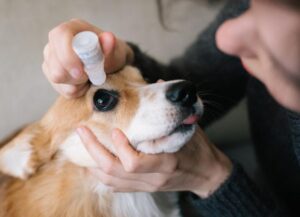
Dry Eye (Keratoconjunctivitis Sicca): Dry eye develops when the eyes of a pet do not generate enough tears to keep the eyes lubricated. This illness can cause pain, redness, and visual issues. Pets may excessively touch their eyes or show signs of ocular pain. Medicated eye drops are frequently used to promote tear production and reduce discomfort.
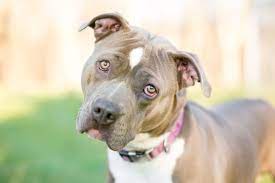
Eyelid Entropion and Ectropion: Eyelid entropion and ectropion are conditions in which the eyelids roll inward (entropion) or outward (ectropion). Entropion can cause the eyelashes to brush on the cornea, causing irritation and perhaps damaging the cornea. Ectropion can expose the inner lining of the eyelid, exposing it to discomfort and infection. Surgical correction is frequently required to address these issues.

Uveitis: Uveitis is an inflammation of the uvea, which is the central layer of the eye. Trauma, infections, or systemic disorders can all cause this condition. It frequently manifests as redness, discomfort, and light sensitivity. Uveitis can be a sign of more serious health problems and should be treated as soon as possible to avoid future difficulties.
Pet Eye Care Preventive Measures
Preventive pet eye care procedures are the foundation for ensuring your animal buddy has a lifetime of good eyesight and ocular health. Here’s a more in-depth look at these critical steps:

Regular Eye Exams: Just as regular doctor visits are necessary for people, scheduling regular check-ups with your veterinarian is vital for your pet’s eye health. Regular eye exams allow your veterinarian to spot any problems early, increasing the likelihood of effective treatment. These examinations also allow you to ask questions regarding your pet’s ocular health and address any concerns you may have.

Maintain a Safe Environment: Your pet’s living place should be a safe refuge for their eyes. Remove any potential risks that could impair their vision. This involves removing any sharp items, chemicals, or plants that could cause discomfort or injury to the eyes. Make sure your pet’s environment is free of anything that could harm their eyes.

Proper Nutrition: A balanced diet is not only important for your pet’s overall health, but it also contributes to optimal eye health. Make certain that their meal contains critical elements such as vitamins and minerals. Fish oil contains omega-3 fatty acids, which can be especially useful for eye health and may help lessen the risk of some eye disorders.

Grooming: To avoid irritation, keep the hair around your pet’s eyes well-trimmed. Long fur can cause irritation, discharge, and an increase in the risk of eye infections. Cleaning their eyes on a regular basis, especially in breeds prone to frequent tearing, can help avoid buildup and infections.

UV Radiation Protection: Just as too much sun exposure can hurt our eyes, certain pets are photosensitive. When your pet is outside, consider using pet sunglasses to protect their eyes, especially during high sunshine hours. Light-colored or hairless breeds are especially vulnerable to UV radiation’s harmful effects, and taking steps can help prevent problems like photokeratitis (sunburn of the eyes).
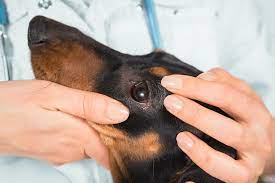
Preventing Eye Injuries: Because dogs and cats are inherently interested, they may find themselves in circumstances where eye injuries might develop. Be wary of sharp objects, chemicals, and potential eye risks in their environment. If your pet participates in sports or outdoor activities, consider utilizing protective eyewear.
First Aid For Pet Eye Injuries

Every pet owner should be able to offer first aid for their pet’s eye damage. Here’s a full description of what to do if you have an eye injury:
Wash Their Eyes: If you find a foreign object in your pet’s eye, the first thing you should do is gently flush the eye with a sterile saline solution. This will aid in the removal of the object and any potential irritants. To avoid further harm, use a clean, lint-free cloth or gauze soaked in saline. Flush from the inner corner of the eye outward to avoid pushing the debris deeper into the eye.
Keep Them Calm: It’s critical to keep your pet as peaceful as possible throughout the procedure. To reassure them, hold them softly and speak soothingly to them. Pets can easily become upset when they perceive discomfort or anxiety, so keeping the surroundings quiet is critical to preventing the injury from worsening.
Cover the Eye: In cases of serious injuries, a clean, soft cloth can be used to cover the wounded eye. This improvised eye patch can shield the eye from further harm and lessen the likelihood of your pet scratching or rubbing it. However, avoid applying any pressure to the eye, as this might aggravate the condition.
Seek Veterinary Care: Even if the damage appears small after basic first aid, you must see your veterinarian. They are qualified to determine the extent of the injury and administer the necessary treatment. In some circumstances, what appears to be common eye disorders in pets conceals more serious underlying conditions, and prompt professional analysis is critical to ensuring the best outcome for your cat.
When to Seek Professional Assistance
Knowing when to seek professional assistance for your pet’s eye problems is critical to their ocular health. Here are some examples of when you should see a veterinarian or a veterinary ophthalmologist:
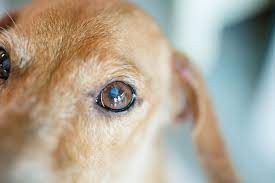
Any Ongoing Discomfort: If your pet shows evidence of ongoing discomfort, such as pawing at their eye, squinting, or displaying signs of pain, it is critical that you visit a professional. These actions could be a sign of common eye disorders in pets that need to be addressed right away. Constant discomfort can have a negative impact on your pet’s well-being and quality of life.

Abnormal Appearance: Any changes in your pet’s eye, such as cloudiness, abnormal discharge, or an unusual appearance, should not be overlooked. These can be symptoms of underlying diseases such as infections, cataracts, or corneal abnormalities. Early detection and treatment for pet eye issues are critical for avoiding future consequences.

Sudden Blindness: A medical emergency exists if your pet experiences a sudden loss of vision. Glaucoma, retinal detachment, or trauma are just a few of the severe illnesses that can result in blindness. To establish the reason and commence proper treatment, a veterinarian or veterinary ophthalmologist must be consulted immediately.

Trauma or Damage: Any major eye damage, whether caused by a foreign object, a conflict, or an accident, requires immediate treatment for pet eye issues by a professional. Corneal injury, lacerations, and even globe rupture can arise from eye trauma. Early evaluation is required to ascertain the extent of the injury and to avoid consequences.

Ocular Disease: If your pet has been diagnosed with a chronic ocular illness, such as glaucoma or cataracts, regular follow-up sessions are essential. Ocular illnesses may necessitate continual management and therapy modifications to maintain your pet’s ocular health and eyesight. Regular visits to a veterinary ophthalmologist ensure that the problem is properly monitored and treated as necessary.
Role of Veterinary Ophthalmologists
A veterinary ophthalmologist’s involvement is critical in the diagnosis and treatment for pet eye issues. Here’s a breakdown of everything you need to know about their job:
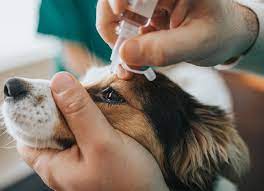
Medical Treatment: Veterinary ophthalmologists are highly qualified specialists who receive additional education and training to become experts in the diagnosis and treatment of eye disorders in pets. This specific knowledge is essential in dealing with the complexities of ocular health in a wide range of species, from dogs and cats to more exotic pets. Their comprehensive expertise in ocular anatomy, physiology, and pathology enables them to properly treat even the most difficult and rare eye disorders.
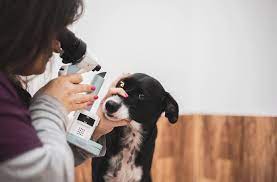
Diagnostic Instruments: Veterinary ophthalmologists have access to a wide range of cutting-edge diagnostic instruments and technology that are critical for accurate diagnosis and treatment. Slit lights, tonometers for detecting intraocular pressure, and electroretinography devices for evaluating retinal function allow for early diagnosis. These instruments provide vital insights into the anatomy and function of the eye, allowing for the detection of abnormalities that would otherwise be impossible to identify using standard veterinary equipment.
Note: There might be affiliate links mentioned here. We may receive a commission if you purchase a product through an affiliate link. There is no additional charge for you. Please do your own research before making any online purchases.
Surgical Skill: Veterinary ophthalmologists are highly competent surgeons who can undertake delicate and sophisticated eye procedures. These operations, such as cataract removal, corneal transplants, and eyelid adjustments, frequently necessitate a high level of precision and competence. Ophthalmologists can provide the finest level of care when surgery is required to repair or preserve a pet’s vision. Their knowledge is extremely useful when dealing with eye diseases that could have resulted in blindness or significant discomfort.
Treatment Options for Pet Vision Issues
Treatment for pet eye disorders is as varied as the difficulties themselves, with treatments suited to the unique condition and severity:

Medication: Medication is the initial and frequently major treatment for many common eye issues in pets. This can be in the form of eye drops or ointments that are administered to treat infections, reduce inflammation, or relieve dry eye. To ensure the success of these drugs, it is critical to follow your veterinarian’s advice on the frequency and proper administration of these medications. To avoid difficulties or a lack of progress, proper application is required.
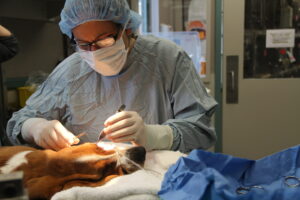
Surgery: In more severe circumstances, surgery may be required to resolve pet eye disorders. Surgical procedures are very important for conditions such as cataracts, glaucoma, and eyelid anomalies. Veterinary ophthalmologists, who are experts in this field, frequently perform these operations. Cataract removal, for example, can restore a pet’s eyesight, whereas glaucoma surgery can reduce intraocular pressure and protect the optic nerve from future damage.
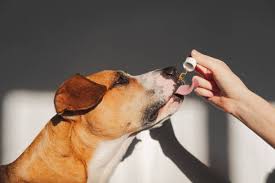
Nutritional Supplements: Dietary supplements, such as omega-3 fatty acids, can help with certain eye disorders. These supplements may aid in the management of problems such as dry eye and boost overall ocular health. However, before adding any supplements to your pet’s diet, you must first speak with your veterinarian. They can advise you on suitable dosages and which supplements would be most useful for your pet’s condition.
Lifestyle Changes: Managing underlying health concerns can have a substantial impact on improving or stabilizing pet eye problems in some circumstances. Controlling diabetes, for example, through medication and dietary changes, may aid in the management of diabetic cataracts. Similarly, lifestyle changes, such as maintaining a low-stress environment for a pet with uveitis, can aid in rehabilitation.
Living with a Blind or Visually Impaired Pet
With the correct assistance and changes, living with a vision-impaired pet can be a pleasant experience. Here are some crucial factors for assisting your pet in adjusting to their new lifestyle:
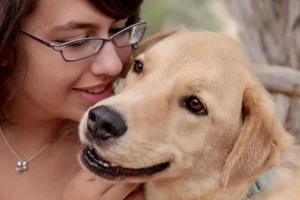
Pet Safety: First and foremost, your pet’s safety must be prioritized. Remove potential risks, sharp corners, and barriers to make your home safer and easier to navigate. Create open paths for your pet to go around without stumbling or bumping into items. Pet-proofing your home protects their physical health.

Verbal Cues: For a visually challenged pet, verbal communication is much more important. To guide them, use consistent verbal cues and directives. They can learn to navigate their surroundings more successfully by listening to your voice and using the tone you use. Simple orders such as “stop,” “turn,” and “come” can help keep them safe.
Scent and Sound: Encourage your pet to use their other senses for navigation, notably scent and sound. Scent trails can assist them in orienting themselves, while aural signals such as clapping hands or using a clicker can provide orientation cues. These sensory aids allow them to walk around more confidently.

Follow a Routine: Pets thrive on routines and familiarity, which are especially important for sight-challenged animals. Making abrupt changes to their environment might induce anxiety and confusion. A steady schedule and setting comfort and stability allow your pet to feel comfortable.

Specialized Products: There are things available to help vision-impaired pets have a better life. Nonslip mats provide firm footing, allowing your pet to stroll without slipping. Protective barriers can keep children out of potentially dangerous situations. Consider these accessories to make your pet’s life easier and more comfortable.
FAQs
What is the significance of pet eye care?
Pet eye care is essential since a pet’s eyes are not just windows to the soul but also key sensory organs. Maintaining good eye health ensures that your pet can navigate the world comfortably and that their overall well-being is maintained.
How frequently should I have my pet’s eyes examined?
A routine eye exam should be scheduled at your regular veterinary check-ups. Typically, this means at least once a year, but depending on your pet’s age and special needs, your veterinarian may recommend more frequent checks.
Can pets develop cataracts in the same way that humans do?
Yes, pets can develop cataracts, which cause the lens of the eye to fog. Senior pets frequently develop cataracts, but they can also develop from diabetes, eye injury, or heredity.
What should I do if my pet’s eye has a foreign object in it?
If your pet has a foreign object in their eye, gently flush the eye with a sterile saline solution while keeping them calm. Cover the affected eye with a soft towel and seek immediate veterinarian attention to determine the extent of the injury.
How can I assist my vision-impaired pet in adjusting to their new life?
To assist your visually impaired pet in adapting, provide a safe environment, provide consistent verbal cues, encourage reliance on scent and sound, follow a constant schedule, and consider utilizing specific goods made for visually impaired pets.
What are the most prevalent symptoms of glaucoma in pets?
Redness in the eye, squinting, excessive weeping, and clouded corneas are all common symptoms of glaucoma in pets. If you detect any of these symptoms, you must seek immediate veterinarian assistance.
Are some pet breeds more prone to eye problems than others?
Yes, some breeds are more prone to specific eye disorders. Brachycephalic breeds such as Bulldogs, for example, may be prone to corneal difficulties, while Siberian Huskies may acquire conditions such as progressive retinal atrophy. It is critical to be aware of breed-specific dangers and to adopt appropriate preventive actions.
What should I feed my pet to help their vision?
A healthy diet rich in key nutrients is essential for general health, including eye health. Fish oil contains omega-3 fatty acids, which can be very important for maintaining good eye health. Consult your veterinarian for dietary advice tailored to your pet.
Can I use human eye drops to treat my pet’s vision issues?
Never use human eye drops on your pet without first speaking with your veterinarian. Some human eye drops may be harmful to pets and may aggravate their illness. Before administering any drug, always seek professional counsel.
What exactly is the distinction between a veterinarian and a veterinary ophthalmologist?
A veterinarian is a general practitioner who can treat a variety of pet health problems. A veterinary ophthalmologist, on the other hand, is a specialist with specialized training in diagnosing and treating complex eye problems in animals. They have access to sophisticated equipment and, when necessary, undertake complex eye procedures. For specific eye-related disorders, your ordinary veterinarian may refer you to a veterinary ophthalmologist.
Conclusion
Pet eye care is an important part of being a caring pet owner. Understanding the structure of a pet’s eye, recognizing common eye disorders, taking preventive measures, and understanding when to seek expert treatment for pet eye issues are all important for maintaining your pet’s eyesight and overall well-being. Your devotion to your pet’s ocular health, whether it’s a routine eye exam or treatment for a specific eye disease, can ensure a happy and rewarding life for both you and your cherished companion.
Cats have been our constant companions for thousands of years, and for good reasons. They are among the most popular pets in the world, noted for their independence while being friendly.
Table of Contents
Introduction
Whether you’re a first-time cat owner or thinking about adding a new feline member to your family, choosing the correct cat breed for your lifestyle is critical. Different breeds have different personalities, care needs, and energy levels, which can have a big impact on how well they fit into your life.
In this comprehensive article, we’ll look at the intriguing world of cat breeds, their distinguishing qualities, and how to choose the right cat breed for you. We’ll take into account aspects like activity level, grooming requirements, and temperament to help you make an informed decision and maintain a happy, harmonious relationship with your new feline companion.
Understanding the Basics of Cat Breeds
Cats, our cherished companions for thousands of years, come in a wide range of breeds, each with its own set of qualities and characteristics. This variety is the result of decades of careful breeding to emphasize specific characteristics such as coat style, color, size, and temperament. Cats, like dogs, are classified into several breeds, each with its own specific characteristics, making the selection of a feline partner an intriguing and personal undertaking.
In this analysis of the basics of cat breeds, we’ll look at how cats are classified and identify the key differences between them. This knowledge is useful in making an informed decision when choosing the right cat breed for your lifestyle.
- Cats of Purebred Origin

Purebred cats are the feline equivalent of royalty. These majestic creatures are the result of generations of meticulous breeding to achieve precise breed requirements. As a result, they frequently exhibit predictable traits and qualities that adhere to the established norms of the breed. Siamese cats, for example, are known for their beautiful blue almond-shaped eyes, while Persian cats have long, luxuriant fur and a peaceful disposition. The magnificent Maine Coon, on the other hand, stands out for its enormous stature, tufted ears, and gregarious personality. These cats are often associated with breed-specific characteristics, and their pedigree is well documented.
- Domestic Longhair and Shorthair Cats

Domestic shorthair and longhair cats, unlike purebred cats, do not comply with certain breed requirements. These cats are the beautiful product of Mother Nature’s artistry, combining numerous breeds and their distinct characteristics. Domestic shorthairs can have coats of varied colors and patterns, but domestic longhairs can have a variety of fur lengths and are frequently a combination of breeds. What they lack in pedigree, they make up for in originality, diversity, and adaptability. These cats are known for their resilient and easygoing personalities, making them ideal companions for households looking for a cat that has it all.
- Crossbred Cats

Hybrid cats provide an insight into the wild side of feline breeding. These fascinating creatures are the result of combining domestic cats with their wild cousins, such as the Bengal, which carries Asian leopard cat traits. Hybrid cats have different appearances and mannerisms that typically resemble those of their wild predecessors. Bengals, for example, have beautifully marked coats that resemble those of their wild forebears and are lively and playful. The Savannah, serval cat crossed with a domestic cat, is recognized for its exotic appearance and energetic attitude.
- Cats of Distinction

Specialty cats are the outliers of the feline world, with distinct physical traits that distinguish them from other breeds. The Sphynx, a beautiful hairless breed, is an excellent example of a specialist cat. Despite their lack of fur, Sphynx cats have an extremely charming personality. They are known for being curious and affectionate. Sphynx cats are prized for their unusual appearance and warm, cuddly temperament, enticing individuals who enjoy the unusual.
Personal preferences ultimately determine whether you acquire a purebred or mixed-breed cat. Each cat breed delivers its own set of pleasures and rewards. Some people like the beauty and dependability of purebred cats, while others enjoy the unique and individualistic appeal of mixed-breed cats. Understanding these broad kinds of cat breeds is the first step in the enjoyable process of choosing the right cat for your individual lifestyle. Whatever you decide, the friendship you develop with your furry pet will be cherished and long-lasting.
Evaluating Your Lifestyle
Choosing the right cat breed is much more than just selecting a cute or exotic-looking feline; it’s about finding a companion who fits your lifestyle and provides you joy every day. Assessing your lifestyle is an important part of this decision-making process on how to choose the right cat breed. It ensures that your new feline companion is a suitable fit for you and your family. Here are some important lifestyle factors to consider while choosing the best cat breed:
- Level of Activity

Consider your own level of exercise and preferences. Do you prefer outdoor activities, energetic pursuits, and regular exercise, or do you prefer a more relaxed, indoor-oriented lifestyle? Cat breeds, like people, have variable energy levels. Some cats, like the Siamese and Bengal, are extremely active and require a lot of playtime to keep them happy and healthy. Breeds like the Persian and Ragdoll, on the other hand, prefer a peaceful indoor environment. It is critical to match your activity level with that of your future feline partner for both your enjoyment and the cat’s well-being.
- Living Area

Another important element to consider is the living environment you provide for your cat. Do you live in a large house with plenty of space or in a small apartment with restricted space? The amount of room available can have a big impact on your cat’s comfort and exercise chances. Larger, more energetic breeds, such as Maine Coons or Abyssinians, frequently flourish in larger, more open habitats that allow them to participate in stimulating activities. Smaller living quarters, on the other hand, may be appropriate for less active breeds or senior cats who are comfortable with indoor existence.
- Allergies
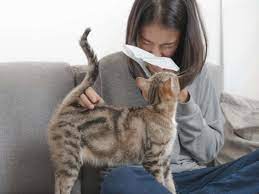
Consider any allergies in your family. Allergies can be a major issue when it comes to how to choose the right cat breed. While no cat is completely allergy-free, certain breeds are thought to be more allergy-friendly than others. Breeds with lower shedding and fewer allergenic proteins in their saliva or dander, such as the Russian Blue or the Sphynx, may be better suited to allergy sufferers. Regular grooming and keeping a clean living environment can also aid in the reduction of allergic reactions.
- Domestic Situation

If you have children or other pets in your home, you must select a cat breed with a temperament that is appropriate for a family setting. Some breeds, such as the Maine Coon and the Ragdoll, are known for their patience and gentle nature, making them ideal for families with children. Others, such as the Bengal, may necessitate additional supervision due to their active and playful nature. The compatibility of your cat with existing family members is critical for creating a harmonious and safe environment.
- Work Timetable

Consider your work schedule and the frequency with which you are away from home. Cats vary in their independence, so it’s critical to choose a breed that fits into your daily routine. Scottish Fold and British Shorthair cats are more independent and can tolerate longer periods alone. Highly social breeds, such as the Siamese or Burmese, may become distressed if left alone for extended periods of time. It is critical for your cat’s well-being to ensure that his or her requirements for companionship and connection coincide with your work schedule.
- Grooming and Maintenance
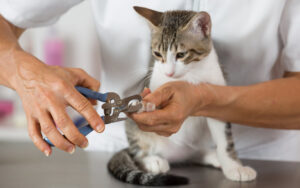
Are you willing to devote time and effort to grooming your cat? Some breeds have high grooming requirements, while others are low-maintenance. Long haired breeds like the Persian or the Maine Coon require regular brushing to prevent matting and preserve their coats. In contrast, short haired breeds like the American Shorthair or the Bombay have few grooming requirements. The time and energy you’re prepared to commit to grooming can impact your choice of breed.
Now that you’ve examined your lifestyle, it’s time to explore various cat breeds and how they connect with your daily life.
Choosing the Right Cat Breed
The optimal cat breed for you will depend on how well their qualities and requirements complement your lifestyle. Here is a complete description of different cat breeds, their personalities, care needs, and how they fit into diverse lifestyles:
- Ragdoll

Personality: Ragdolls are recognized for their gentle and submissive demeanor. They’re affectionate, generally wanting human interaction, and they have a penchant for turning limp when picked up, hence the name.
Activity Level: These cats are normally laid-back and not particularly active. They like to relax and be pampered.
Grooming and Care: Because Ragdolls have semi-long fur, regular grooming is required to prevent matting.
Family Friendly: Ragdolls make wonderful family cats since they are gentle with children and other pets.
Living Environment: They thrive in both apartments and houses.
Allergies: Some allergy sufferers prefer Ragdolls because of their low shedding.
- Siamese Cat

Personality: Siamese cats are very vocal, gregarious, and affectionate. They have a lot of fun engaging with their human friends.
Activity Level: Siamese cats are extremely energetic and require a great deal of mental and physical activity.
Grooming and Care: Because of their short coat, they require less care.
Family Friendly: Siamese cats can be wonderful with families, but their high energy level may be too much for young children.
Living Space: They thrive in larger homes with plenty of room to run around.
- Coon of Maine

Characteristics: Maine Coons are friendly and social giants. They are commonly referred to as “gentle giants” because of their playful and friendly attitude.
Activity Level: They are lively cats who enjoy playing and going on excursions outside.
Grooming and Care: Maine Coons have long, luxuriant fur that must be groomed on a regular basis.
Family Friendly: They are ideal for families because of their pleasant and gentle demeanor, making them perfect for youngsters.
Living Space: Given their size and activity level, larger homes are excellent for Maine Coons.
Allergies: Maine Coons are not hypoallergenic.
- Persian

Personality: Persian cats are reserved, peaceful, and quiet. They are well-known for their kind and caring nature.
Activity Level: They love resting in a peaceful setting and have a low activity level.
Grooming and Care: Persian cats’ long, dense fur necessitates extensive grooming.
Family Friendly: Their tranquil demeanor makes them ideal for families, particularly those who prefer a quieter lifestyle.
Living Space: Persians thrive in modest apartments and houses.
Allergies: They are not thought to be hypoallergenic.
Note: There might be affiliate links mentioned here. We may receive a commission if you purchase a product through an affiliate link. There is no additional charge for you. Please do your own research before making any online purchases.
- Bengal

Characteristics: Bengals are lively and playful. They have a wild appearance and like playing with others.
Activity Level: Bengals are extremely active and demand a lot of playing as well as cerebral stimulation.
Grooming and Care: Their short coat requires little maintenance.
Family Friendly: Bengals are a fantastic choice for families, but their energy level may be too high for very small children.
Living Space: They thrive in larger houses with plenty of room for play and exploration.
Allergies: Bengals do not have hypoallergenic properties.
- Scottish Fold

Characteristics: Scottish Folds are noted for their distinctive folded ears and pleasant, easy going demeanor.
Activity Level: They are moderately active and love playtime, but they are also satisfied resting.
Grooming and Care: Their short to medium coat requires little upkeep.
Family-Friendly: Scottish Folds make excellent family dogs, particularly in households with older children.
Living Space: They are versatile and may live in a variety of settings.
Allergies: They are not thought to be hypoallergenic.
- Sphynx

Personality: Sphynx cats are noted for their hairless appearance as well as their inquisitive, sociable, and extroverted personality.
Activity Level: They are physically active and like playing and exploring.
Grooming and Care: Despite popular belief, Sphynx cats require regular bathing to maintain skin health.
Family Friendly: They are appropriate for families who are not turned off by their unconventional appearance.
Living Space: They adapt well to a variety of living environments.
Allergies: Due to their lack of fur, Sphynx cats may be a better choice for people who suffer from allergies.
- Russian Blue

Characteristics: Russian Blues are noted for their exquisite beauty and reserved but friendly personality.
Activity Level: They are physically active and like participatory play.
Grooming and Care: Because of their short, dense coat, they require little care.
Family Friendly: They can be ideal for families who prefer a more peaceful existence.
Living Environment: Russian Blues thrive in apartments and houses.
Allergies: Because of their lesser shedding, they may be healthier for people who suffer from allergies.
- Abyssinians

Personality: Abyssinians are lively, playful, and inquisitive cats. They like to be challenged mentally and physically.
Activity Level: They are very energetic and require a lot of exercise and play.
Grooming and Care: Their short coat requires little maintenance.
Family Friendly: Abyssinians can be good for families, although they can be too energetic for very young children.
Living Space: They thrive in homes with plenty of room to run and play.
Allergies: Abyssinians do not have hypoallergenic properties.
- Burmese

Characteristics: Burmese cats are friendly and outgoing, and they like connecting with their human friends.
Level of Activity: They are moderately active and enjoy interactive play.
Grooming and Care: Because of their short coat, they require less care.
Family-Friendly: Burmese cats are ideal for households with children.
Living Space: They adapt well to a variety of living environments.
Allergies: They are not thought to be hypoallergenic.
Making the Best Decision
Choosing the right cat breed is an important decision that can provide years of friendship and joy. This decision, however, should be made after careful consideration of your lifestyle, preferences, and the unique characteristics of various cat breeds. Here are some extra ideas to assist your quest of how to choose the right cat breed and ensure you make an informed and responsible decision:
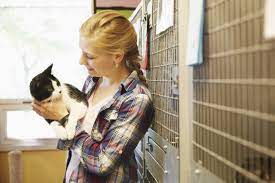
Visit Shelters: Visiting local animal shelters and rescue organizations is one of the most rewarding ways to find your new feline friend. Countless cats in need of loving homes are frequently housed in shelters. These cats come from all walks of life and can be extremely affectionate and grateful companions. Many mixed-breed cats can be found in shelters and can be an excellent fit for a variety of lifestyles. Don’t underestimate the allure of a shelter cat; they have their own distinct beauty.

Talk to Breeders: If you determine that a specific purebred cat is the ideal fit for you, it’s critical to connect with responsible breeders who emphasize their cats’ health and well-being. Responsible breeders follow ethical breeding procedures and are concerned with the wellbeing of their feline friends. When speaking with breeders, inquire about the breed’s specific traits and characteristics, as well as any potential health issues associated with the breed. A reputable breeder will inform you about the cat’s ancestry, medical history, and any required vaccinations or health clearances.

Spend Time with the Cat: Before making a final decision, spend as much time as possible with a cat. Visit breeders, shelters, or foster homes to discover if the cat’s personality matches yours. Interacting with a cat in person can help you determine its temperament, energy level, and compatibility with your family. It’s a chance to watch their behavior and form an initial relationship.

Consider Adoption: Adopting a cat is a wonderful experience. By giving a loving home to a needy cat, you not only gain a loyal companion but also contribute to animal welfare. Shelter cats, regardless of breed, can provide unconditional love and gratitude. When you rescue a cat, you form a special bond with them because you know you’ve given them a second chance at happiness.
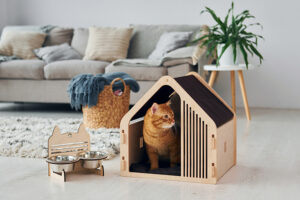
Prepare Your Home: Before bringing your new cat home, ensure that your living space is cat-friendly. Remove potential hazards that might harm your pet, such as toxic plants, chemicals, or small objects they might swallow. Provide essential supplies like litter boxes, scratching posts, toys, and cozy resting spots. Making your home safe and comfortable for your new cat will help them adjust and feel at peace in their new surroundings.

See a Veterinarian: All cats, regardless of breed, require regular veterinary care. Consult a veterinarian to ensure that you are completely equipped to meet your cat’s healthcare needs. Discuss immunization regimens, preventive care, and any health risks specific to the breed you select. Keeping your cat healthy and happy is a lifelong responsibility.

Patience and Commitment: Cats can live for 15 years or more, so be prepared to make a long-term commitment if you get a cat. It may take some time to form a deep bond with your cat, so be patient and persistent in your care and attention. You’ll develop a strong bond with your feline partner over time, one filled with love, trust, and innumerable cherished memories.
FAQs
What are the essential elements to consider when choosing a cat breed for my lifestyle?
You should consider aspects including your activity level, dwelling space, allergies, family status, job schedule, and grooming and maintenance preferences when choosing the right cat. These elements will help you pick a cat that fits nicely into your daily life.
What is the distinction between purebred cats and mixed-breed cats?
Purebred cats are the result of selective breeding for specific breed standards, and their characteristics are frequently predictable. Mixed-breed cats lack breed criteria and exhibit a wide range of features dependent on their ancestors.
Are hybrid cats suitable for households?
Hybrid cats are the offspring of domestic cats and wild cat species, and they can have distinct appearances and behaviors. They may be appropriate for some households, but their unique demands and traits must be carefully examined.
Which cat breeds are thought to be hypoallergenic?
While no cat is completely allergy-free, certain breeds are thought to be more allergy-friendly than others. Because of their decreased shedding and allergenic protein levels, breeds like the Russian Blue and Sphynx may cause fewer allergic reactions in some people.
After adopting or acquiring a cat, how can I ensure its health and well-being?
All cats require regular veterinary care. Consult a veterinarian to ensure that you are completely equipped to meet your cat’s healthcare needs. Discuss immunization regimens, preventive care, and any health risks specific to the breed you select.
Is it preferable to adopt a cat from a shelter or to buy one from a breeder?
Both options have advantages. Adopting a shelter cat ensures a loving home for a cat in need, regardless of breed. Buying from a reputable breeder can provide greater certainty in terms of breed features and ancestry. The decision is based on your preferences and priorities.
Before adopting or acquiring a cat, how can I know if its personality matches my expectations?
Spend as much time as possible with the cat before making a final decision. Interact with the cat at breeders, shelters, or foster homes to assess its temperament, energy level, and suitability for your family.
Can I give a caring home to an allergic cat in my household?
Yes, hypoallergenic cat breeds such as the Sphynx and Russian Blue may be a better option for households with allergy sufferers. Regular grooming and keeping a clean living environment can also aid in the reduction of allergic reactions.
Is a huge living space required to accommodate specific cat breeds?
The breed’s level of activity determines how much space a cat needs. Larger living spaces may suit more active breeds, such as Maine Coons, although less active breeds, such as Persians, can adapt well to smaller homes or apartments.
How long should I expect a cat to live, and what is the time commitment?
Cats can live for up to 15 years, so be prepared to make a long-term commitment. It may take some time to form a deep bond with your cat, so be patient and persistent in your care and attention. You’ll develop a strong and lasting bond with your feline buddy over time.
Conclusion
Choosing the best cat breed for your lifestyle is a big decision that will have a big impact on both your life and the life of your new feline buddy. When making this decision on how to choose the right cat breed, consider your daily routine, living situation, and personal preferences. Remember that all cats, regardless of breed, deserve love, care, and a forever home, so make your decision with the intention of giving your new pet the best life possible. Whether you choose a purebred or a mixed-breed cat, it will definitely provide you with a lifetime of love, joy, and companionship.
Dogs are often referred to as “man’s best friend” for good reasons. Their loyalty, friendship, and, most importantly, friendliness make them one of the world’s most cherished and popular pets. While each dog is unique, many breeds are well-known for their extreme friendliness.
Table of Contents
Introduction
In this article, we’ll look at the top ten most friendly dog breeds, analyzing their traits, temperaments, and appropriateness as family pets.
How to Choose the Loyal and Most Friendly Dog Breeds
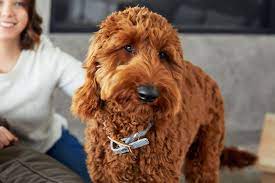
The temperament and disposition of the dog will considerably influence your experience as a pet owner; therefore, choosing the most friendly dog breed is an important decision. Here are some stages and factors to consider while selecting the friendliest dog breed according to your lifestyle and preferences:
Consider Your Lifestyle: Before selecting a dog breed, consider your lifestyle and daily routine. Consider the following factors:
- Where you live (apartment, house, etc.)
• The quantity of available room for the dog
• Your daily activities and work routine
• Your level of activity and exercise habits
• Any pet dander allergies or sensitivities
• The presence of youngsters, other pets, or elderly relatives in your home

Analyze Different Breeds: Begin your quest to find the friendliest dog breeds in the world by researching different dog breeds to find those noted for their friendly and gregarious demeanor. You can do this by reading books, watching documentaries, or using online resources. Take a look at the following:
- Temperament: Seek out breeds that are sociable, affectionate, and social.
• Size: Based on your living conditions, choose a small, medium, or giant breed.
• Energy Level: Match the energy level of the dog to your activity level.
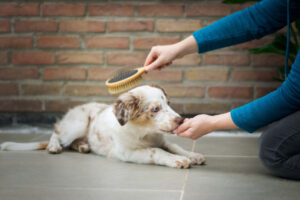 • Grooming Requirements: Determine the amount of time and effort required for grooming and maintenance.
• Grooming Requirements: Determine the amount of time and effort required for grooming and maintenance.
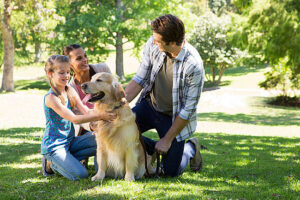 • Talk to Dog Owners: Talk to people who own dogs of the breeds you want to learn more about. They can provide useful information on the breed’s behavior, demeanor, and any special characteristics to be mindful of.
• Talk to Dog Owners: Talk to people who own dogs of the breeds you want to learn more about. They can provide useful information on the breed’s behavior, demeanor, and any special characteristics to be mindful of.
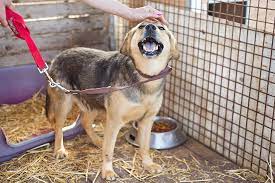 • Go to Local Shelters and Breeders: Going to local animal shelters or breeders is a great opportunity to meet dogs in person. Spend time observing the behavior of various breeds. Shelters frequently have mixed-breed dogs who are quite friendly and make excellent pets.
• Go to Local Shelters and Breeders: Going to local animal shelters or breeders is a great opportunity to meet dogs in person. Spend time observing the behavior of various breeds. Shelters frequently have mixed-breed dogs who are quite friendly and make excellent pets.
 • Consider Adoption: Adoption is a terrific alternative, and shelters have friendly dogs of all kinds and mixed breeds. These dogs frequently require a caring environment and can develop into quite loyal and affectionate companions.
• Consider Adoption: Adoption is a terrific alternative, and shelters have friendly dogs of all kinds and mixed breeds. These dogs frequently require a caring environment and can develop into quite loyal and affectionate companions.
 • Seek Advice from Breed-Specific Rescue Groups: Some dog breeds have breed-specific rescue groups that specialize in rescuing and rehoming dogs of that breed. These organizations can inform you about the temperament and requirements of the friendliest dog breeds in the world.
• Seek Advice from Breed-Specific Rescue Groups: Some dog breeds have breed-specific rescue groups that specialize in rescuing and rehoming dogs of that breed. These organizations can inform you about the temperament and requirements of the friendliest dog breeds in the world.
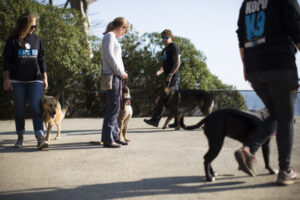 • Assess Temperament and Socialization: When interacting with a dog, observe its behavior. Look for the following characteristics of a friendly dog:
• Assess Temperament and Socialization: When interacting with a dog, observe its behavior. Look for the following characteristics of a friendly dog:
• Approachability: A friendly dog is usually curious and will approach you without being aggressive.
• Body Language: Pay attention to the dog’s body language. A friendly dog will have a relaxed posture, a wagging tail, and an open mouth.
• Socialization: A well-socialized dog with people and other dogs is more likely to be sociable and well-adjusted.
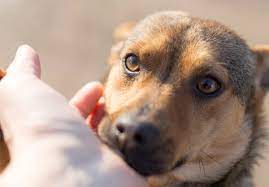 • Think About Your Commitment: Bringing a dog into your life is a long-term commitment. Consider pet ownership obligations such as feeding, grooming, training, and healthcare. Prepare to put in time and effort to form a close friendship with your new furry pet.
• Think About Your Commitment: Bringing a dog into your life is a long-term commitment. Consider pet ownership obligations such as feeding, grooming, training, and healthcare. Prepare to put in time and effort to form a close friendship with your new furry pet.
 • Consult a Veterinarian: When selecting a breed among the friendliest dogs in the world, it’s a good idea to consult with a veterinarian or a professional dog trainer. They can provide advice based on your individual requirements and preferences.
• Consult a Veterinarian: When selecting a breed among the friendliest dogs in the world, it’s a good idea to consult with a veterinarian or a professional dog trainer. They can provide advice based on your individual requirements and preferences.
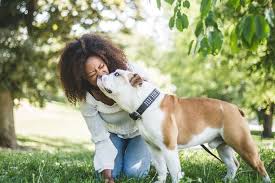 • Select the Best Fit: Finally, choose the dog breed among the most family friendly dog breeds that fits your lifestyle and tastes. Remember that, while breed features might provide a basic sense of a dog’s behavior, each dog is an individual with his or her own personality.
• Select the Best Fit: Finally, choose the dog breed among the most family friendly dog breeds that fits your lifestyle and tastes. Remember that, while breed features might provide a basic sense of a dog’s behavior, each dog is an individual with his or her own personality.
Top 10 Most Loyal and Most Friendly Dog Breeds
Here are the 10 most family friendly dog breeds you can choose to adopt for your family.
- Labrador Retriever

Labrador Retrievers, sometimes known as “Labs,” are often ranked among the friendliest dog breeds in the world. Their friendly and lively personality makes them a popular choice for both families and individuals. Labs are extremely gregarious, affectionate, and eager to please. They are recognized for their tenderness and patience, making them wonderful companions, particularly for children. Because of their pleasant and cooperative temperament, labs are not only one of the most family friendly dog breeds but also excel as therapy dogs and in search and rescue missions.
- Golden Retriever
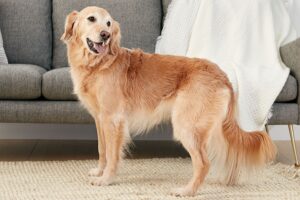
Due to their affable demeanor, Golden Retrievers are another popular choice for families. They make excellent companions due to their compassionate, clever, and adaptive temperament. They are not only sociable but also quite obedient, making them very easy to train. Being one of the friendliest dogs in the world, Golden Retrievers are noted for their fondness for youngsters and their love of human interaction. They frequently build close ties with their families and excel at offering emotional support.
- The Beagle

Beagles are small to medium-sized dogs with affable and inquisitive attitudes. They have a happy and lively personality, making them ideal family pets. Beagles are social dogs who get along with both humans and other dogs. Their loving temperament, combined with their unusual howl and lovely appearance, has earned them a special place in the hearts of dog lovers all around the world. They’re not only friendly, but they’re also very lively, making them ideal for active families.
- Bulldog

Bulldogs, despite their formidable appearance, are quite amiable dogs. They are known for being gentle and easygoing. Bulldogs are often affectionate and build close ties with their owners. They are great with youngsters and are usually quite patient. Their small stature and easy-going demeanor make them excellent for city living, and their amiable demeanor makes them great companions for people of all ages.
- Pug

Pugs are little dogs with enormous personalities. They are renowned for their pleasant and lively personalities, and are frequently referred to as “clowns” due to their funny expressions. Being one of the friendliest dog breeds in the world, Pugs are known to thrive in human company and like being a part of a family. Their active and friendly personalities make them ideal companions for both families and individuals. Pugs are also recognized for their versatility, which makes them ideal for a variety of living settings.
- Irish Setter

Irish Setters are noted not just for their striking red coats but also for their amiable and gregarious demeanor. They are full of energy and enjoy playing and interacting with others. Irish Setters are very affectionate and enjoy being the center of attention. They are ideal for active families and individuals who can offer them the activity and mental stimulation they require to maintain their happiness and health.
- Bichon Frise
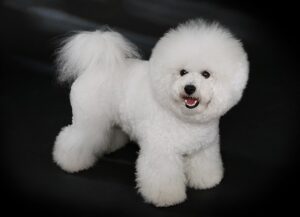
The Bichon Frise is a tiny dog with a large heart. They are one of the friendliest dogs in the world, well-known for being sociable and affectionate, making them a good choice for families and individuals searching for a companion dog. Bichon Frises are gregarious, playful, and flexible, making them ideal for a variety of lifestyles. They are also well-known for having a hypoallergenic coat, which is beneficial to allergy patients.
- Boxer

Boxers are known for their outgoing, sociable attitudes. They are powerful, muscular dogs who enjoy human interaction and are noted for their liveliness. Boxers are considered to be one of the friendliest dog breeds in the world, as they are extremely devoted and protective of their owners, making them ideal family dogs. While their unlimited energy necessitates an active owner, their pleasant and loving attitude makes the work worthwhile.
- Cocker Spaniel

Cocker Spaniels are well-known for their gentle and charming demeanor. They are affectionate, playful, and wonderful with children, making them popular family pets. Cocker Spaniels are also quite flexible and may thrive in a variety of living situations. Their desire for attention and desire to please make them excellent companions for individuals of all ages.
Note: There might be affiliate links mentioned here. We may receive a commission if you purchase a product through an affiliate link. There is no additional charge for you. Please do your own research before making any online purchases.
- Shih Tzu

Shih Tzus are a petite, amiable breed with a delightful demeanor. They are well-known for their sweet and affectionate personalities, making them ideal family pets. Shih Tzus are gregarious dogs who thrive on human company. They are frequently referred to as “lap dogs” owing to their desire to be close to their owners. Their versatility and modest workout requirements make them excellent for apartment dwellers or those who lead a less active lifestyle.
How to Train a Friendly Dog
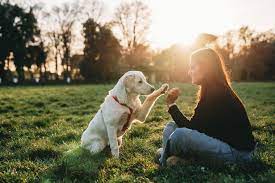
Training a dog to be social is an essential part of being a responsible pet owner. A friendly dog is not only enjoyable to be around, but it is also safe and well-accepted in social situations. Here are some strategies and suggestions to assist you in training your dog to be friendly:
- Begin Early: Socialization is essential, and the earlier you begin, the better. During their essential socialization stage, which normally lasts until about 16 weeks of age, puppies are more sensitive to new experiences, people, and other animals.

- Socialize Your Dog with a Variety of People and Dogs: Socialize your dog with a variety of people, including youngsters, adults, and the elderly. Allow them to play with dogs of different breeds and sizes. This helps your dog become accustomed to different people and animals, which reduces fear and hostility.

- Positive Reward Method: To reward friendly behavior, use positive reward tactics. Offer food, praise, and affection when your dog is calm and friendly with people and other dogs. This strengthens the notion that being nice leads to positive outcomes.
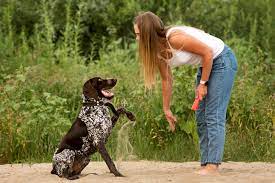
- Obedience Training: Teach your dog basic obedience commands such as “sit,” “stay,” and “come.” Obedience training teaches your dog how to behave in different situations and increases their confidence.

- Desensitization and Counterconditioning: Work on desensitization and counterconditioning if your dog is afraid or uncomfortable around specific people or canines. Expose your dog to the trigger gradually while offering positive rewards, such as treats or playing.

- Favorable Socializing: Ensure that your socializing experiences are favorable. Maintain cool and manage exchanges. Avoid exposing your dog to too many new experiences all at once.
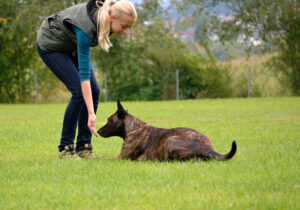
- Consider Professional Training: If your dog is aggressive or fearful of people or other dogs, seek the advice of a professional dog trainer or behaviorist. They can assist in resolving any challenges and developing a tailored training strategy.

- Regular Exercise: Ensure that your dog receives enough exercise. A weary dog is often better behaved and less likely to exhibit aggressive or scared behavior. Regular exercise, playtime, and mental stimulation are all necessary.
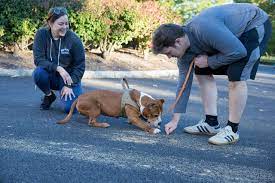
- Behavioral Cues: Teach your dog how to respond to cues. For example, if they begin to exhibit undesired behavior, use the “leave it” command to shift their focus.

- Consistency: Maintain consistency in your workouts. Always use the same commands and incentives. Inconsistency might confuse and impede your dog’s progress.

- Exercise Patience: Training requires time and patience. Because not all dogs advance at the same rate, be patient and persistent. Small triumphs along the way should be celebrated.
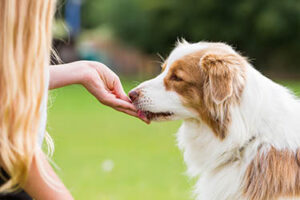
- Promote Friendly Behavior in Real-Life Situations: To promote friendly behavior, take your dog to areas with regulated interactions, such as dog parks or pet-friendly activities. Always keep an eye on these exchanges.
- Understand Your Dog’s Limits: While socialization is crucial, you should also be aware of your dog’s limits. If your dog exhibits signs of stress, fear, or hostility, it is critical that you respect his or her limits and remove them from the situation.

- Regular Check-Ups: Keep your dog healthy by arranging regular vet visits. Health problems can influence the behavior of even the friendliest dogs in the world.
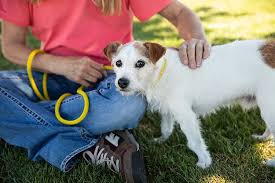
- Be a Positive Role Model: Set a positive example for your dog. Show nice behavior around people and other dogs, as dogs frequently replicate their owners’ behaviors and feelings.
FAQs
Why are some dog breeds seen as more friendly than others?
For millennia, several dog breeds have been selectively selected to demonstrate friendly and sociable tendencies. These characteristics are the product of heredity as well as breed-specific characteristics.
Is it possible to train any dog breed to be friendly?
While all dogs can be educated to be well-behaved and social, some breeds may have natural friendliness. When selecting a dog, it is critical to consider the breed’s innate disposition.
What if my dog acts aggressively or fearfully toward people or other dogs?
If your dog exhibits hostility or fear, you should seek the advice of a professional dog trainer or behaviorist. They can assist in determining the underlying causes and developing a training strategy to solve the problem.
Is there a certain age range for socializing a puppy?
Puppies’ key socializing stage normally lasts until they are about 16 weeks old. Socialization should, however, continue throughout the dog’s life.
Can I socialize my dog if it is not a puppy?
Yes, older dogs can still be socialized, but it may take more time and patience. When compared to socializing puppies, the process may be slower.
Is it possible to socialize a dog who has experienced trauma or abuse?
Socializing a dog with a history of trauma or abuse can be difficult and necessitates the assistance of a professional dog behaviorist. Rehabilitation can be successful in some cases, but it is dependent on the individual dog.
How do I know if my dog is friendly and socialized?
A friendly and well-socialized dog will usually have a relaxed body posture, a wagging tail, an open mouth, and a willingness to approach and interact with people and other dogs.
Is it true that mixed-breed dogs are as friendly as purebred dogs?
Dogs of mixed breeds can be just as friendly as purebred dogs. Individual experiences, socialization, and upbringing all have an impact on their conduct.
In terms of friendliness, what are the benefits of adopting a dog from a shelter or rescue organization?
Many dogs in shelters and rescues require loving homes, and they can be as friendly and affectionate as dogs from breeders. Adopting a dog can be an enjoyable experience.
Is there a one-size-fits-all method for socializing a dog?
Training methods may differ depending on the dog’s age, temperament, and previous experiences. The most critical aspects of the training process are consistency, positive rewards, and patience.
Conclusion
Dogs have been our companions for thousands of years, and one of the main reasons dogs have such a particular place in our hearts is their friendliness. While every dog is an individual with its own unique personality, certain breeds are more predisposed to being friendly and sociable. The top 10 most friendly dog breeds, including Labrador Retrievers, Golden Retrievers, Beagles, Bulldogs, Pugs, Irish Setters, Bichon Frises, Boxers, Cocker Spaniels, and Shih Tzus, offer a wide range of possibilities for individuals seeking a caring and affectionate canine companion.
When picking the friendliest dog breeds in the world, it’s crucial to consider your lifestyle, living circumstances, and the amount of time and energy you can spend with your furry friend. While the breeds listed here are recognized for their friendliness, it’s vital to realize that individual dogs may have various personalities and temperaments. Proper training, socialization, and care have a key role in determining a dog’s behavior.
Dogs, also known as “man’s best friend,” have been bred for a variety of reasons over the centuries. Some varieties were created for herding, while others were created for hunting and companionship. Some of these different breeds excel at athleticism and have exceptional agility and stamina.
Table of Contents
Introduction
These athletic dog breeds are not only visually striking, but they also make great companions for busy people and families. In this post, we’ll look at the top ten most athletic dog breeds and what makes them unique in terms of athleticism, endurance, and physical ability.
How to Choose the Most Agile Dog Breeds
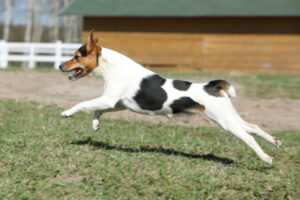
Choosing a highly active dog breed necessitates careful thought and an in-depth understanding of your own lifestyle, interests, and capabilities. Active breeds often require more exercise, training, and mental stimulation; therefore, you must guarantee that you can meet these requirements. Here are some guidelines to help you choose the most athletic dog breed for your lifestyle:
Lifestyle: Consider your daily routine, level of exercise, and the amount of time you can devote to your dog. Do you enjoy hiking, running, or other outdoor activities? Or do you lead a more sedentary existence? Be truthful with yourself about your level of exercise.
Breeds: Analyse numerous active dog breeds to learn about their activity needs, temperament, and compatibility for your lifestyle. Look for breed qualities that match your requirements and preferences. Use credible sources such as breed books, websites, and breed-specific clubs.
Size Matters: Consider the dog’s size. Larger breeds may require more space and exercise, although smaller breeds can frequently meet their needs for activity indoors or in a smaller yard. Your living circumstances, whether you live in an apartment or a house with a yard, may have an impact on your decision.
Temperament and Personality: Each active breed has a unique personality. Some are easily trained and ready to comply, but others are more independent and resistant. Consider whether you want a social, protective, or laid-back dog.
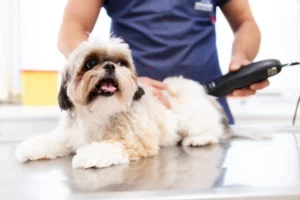
Grooming Requirements: Consider the grooming requirements of the breed you’re considering. Some athletic breeds have thick coats that must be groomed on a regular basis, while others have short, low-maintenance fur.

Health and Longevity: Learn about the breed’s typical health issues. Some active breeds are predisposed to specific health difficulties, and being aware of these potential issues can help you plan for the future.

Meet the Breed: If at all feasible, go to breeders, rescue organizations, or dog owners who have the breed you want. Spend time with the dogs to acquire a sense of their temperament and behavior.

Consider the Dog’s Age and Activity Level: Puppies of active breeds can be a handful, necessitating continuous training and socializing. If you are not prepared for the challenges of rearing a puppy, an adult dog may be a better choice.

Commitment to Training: Highly energetic animals frequently demand more training and mental stimulation. Be prepared to invest time and effort in training to keep your dog happy and well-behaved.

Strategy for Exercise: Make a strategy to provide daily exercise and mental stimulation. Regular walks, playtime, off-leash runs, and possibly participation in dog sports or activities such as agility or obedience training are all examples of this.

Consider Adoption: Don’t forget to look for active dogs in rescue organizations and shelters. There are numerous agile dogs looking for loving homes. Adoption can be a wonderful experience.
Consult a Veterinarian: Talk to a veterinarian about your options, especially if you have specific concerns or requirements about your health and activity levels. A veterinarian can provide advice depending on the breed’s probable health issues.
Be Prepared to Make a Lifetime Commitment: Choosing a dog is a long-term commitment. Dogs can live for a decade or more, so be sure you’re prepared to meet their demands for the rest of their lives.
Choosing an athletic dog breed is a big decision that takes time, effort, and attention. When you pick the correct breed for your lifestyle and degree of activity, you’ll have a devoted and active friend who will provide you with delight for many years to come.
Top Ten Most Active Dog Breeds
- Border Collie

The Border Collie, sometimes known as the “Einstein of dogs,” is recognized for its exceptional agility, speed, and intellect. Originally designed to herd sheep, these dogs can run, change direction quickly, and retain endurance for long periods of time. Border Collies excel in canine sports such as agility and flyball, demonstrating their excellent athletic abilities.
Their sharp minds enable them to understand complex commands and respond to a variety of indications, making them agility competition stars. They are also recognized for their unwavering work ethic, which makes them ideal companions for long treks, frisbee, and other energetic outdoor sports.
- Australian Sheepdog

Despite its name, the Australian Shepherd was developed in the United States, not in Australia. These canines are well-known for their tremendous energy and athleticism. They perform admirably in herding, agility, and other dog sports. Australian Shepherds are not only visually appealing but also physically robust, with their stunning merle coats and startling blue eyes.
They are good candidates for agility classes and other physically demanding activities due to their agility, quickness, and intelligence. Australian Shepherds thrive on exercise and mental stimulation, making them excellent companions for those who are active.
- Belgian Malinois

Because of its exceptional athleticism and work ethic, the Belgian Malinois is frequently used in police and military jobs. The agility, speed, and endurance of this breed are well-known. Belgian Malinois are exceptionally nimble athletes, with an astonishing ability to leap, sprint, and pivot on a dime. They are frequently involved in activities such as Schutzhund, which entails obedience, tracking, and protection duties, demonstrating their adaptability.
These dogs are recognized for their unwavering loyalty and determination, which makes them excellent companions for a variety of duties, including agility training and protective work.
- German Shepherd

German Shepherds are another breed that is well-known for their agility and intelligence. These dogs, who were originally bred for herding, have evolved to thrive in a variety of professions, including search and rescue, police work, and agility competitions. Their robust body, powerful legs, and sharp minds make them ideal for physically demanding activities.
German Shepherds are also well-known for their devotion and protective qualities, making them not only agile but also dependable working and companion dogs.
- Siberian Husky

Siberian Huskies are noted for their amazing endurance and stamina. Originally raised to pull sleds in tough conditions by the Chukchi people of Siberia, these dogs have evolved into exceptional athletes. Their thick double coat protects them from freezing weather, while their powerful legs and agile bodies allow them to haul big objects over great distances.
Siberian Huskies enjoy running and succeed at activities such as mushing and canicross, which allow them to use their natural abilities. They are one of the most athletic dog breeds due to their ability to cross rough terrain and work tirelessly in harsh situations.
- Labrador Retriever

Labrador Retrievers are well-known for their warm and accessible personality, but they are also extremely sporty. Labs were originally trained to retrieve animals during hunting expeditions; thus, they have robust, muscular bodies and incredible stamina. They are strong swimmers who thrive in water sports such as dock diving and waterfowl retrieval.
Because of their athletic qualities, as well as their amiable and trainable disposition, they are popular options for many canine sports and outdoor activities. Labs make excellent hiking, running, and swimming partners.
- Vizsla

The Vizsla, sometimes known as the “Velcro Vizsla” because of its friendly demeanor, is a very athletic breed. These dogs were developed for hunting in Hungary and have a lean, muscular body. Their eye-catching rust-colored coat and expressive eyes add to their visual charm.
Vizslas are well-known for their agility, speed, and endurance. They excel at sports such as agility, flyball, and hunting trials. Because of their strong desire to please their owners, paired with their athleticism, they make excellent partners for a variety of sports and activities.
- Doberman Pinscher

Doberman Pinschers are known for their athleticism and sleek, strong body. They are swift and quick on their feet and were originally bred for guarding and protective jobs. Doberman pinschers have a powerful and muscular body, making them formidable competitors in agility and other physically demanding sports.
They are extremely trainable due to their intelligence and loyalty, and they thrive on activities that push their minds and bodies. Dobermans make ideal companions for individuals looking for an active and protective friend.
- Jack Russell Terrier

Jack Russell Terriers are little in stature but enormous in athleticism and activity. These energetic tiny dogs are well-known for their agility and endurance. They were originally intended for hunting and have a strong prey drive. They enjoy sports such as earthdog trials and agility courses.
Jack Russells are constantly on the move, and their small size allows them to navigate obstacles and demonstrate outstanding agility. They are modest in size, yet they have the heart and athleticism of a much larger dog.
- Whippet

The Whippet is known as the “poor man’s racehorse” because of its exceptional speed and agility. These slim dogs were designed for racing and can reach speeds of up to 35 miles per hour. Whippets thrive at lure coursing, a sport in which they chase a mechanical bait while displaying their amazing sprinting skills.
Whippets are swift and agile, having an elegant and slim body. They make excellent companions for anyone looking for an athletic dog who will also curl up on the couch when not in motion.
How to Motivate a Dog to Exercise
Physical activity, mental stimulation, and positive reinforcement are all used to train a dog to be more active. Whether you have a high-energy breed or a more laid-back one, getting your dog moving is important for their overall health and well-being. Here are some suggestions to help you train your dog to be more active:

Assess Your Dog’s Health: Before beginning any new fitness plan, speak with your veterinarian to ensure your dog is healthy and free of any underlying health conditions that could limit their activity level.

Select Appropriate Activities: When choosing activities, keep your dog’s breed and specific preferences in mind. Some dogs prefer running, hiking, or agility training, but others prefer fetch or interactive toys. Choose activities that are tailored to your dog’s abilities and interests.

Create a Routine: Dogs thrive on routine. Make a regular plan for exercise and playtime. A daily schedule prepares your dog for exercise, making them more interested and energetic at these times.
Note: There might be affiliate links mentioned here. We may receive a commission if you purchase a product through an affiliate link. There is no additional charge for you. Please do your own research before making any online purchases.
Begin Slowly: If your dog isn’t used to regular exercise, begin with shorter, less intensive exercises and gradually progress to longer, more difficult ones. This method prevents injuries and gradually increases your dog’s stamina.

Use Positive Reward: When your dog engages in active action, reward them with goodies, praise, and affection. Positive reinforcement will encourage your dog to stay active.
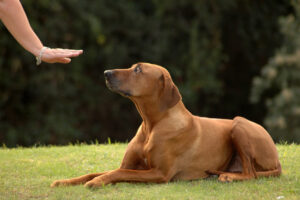
Teach Basic Commands: Basic commands such as “sit,” “stay,” and “come” are necessary for controlling your dog while participating in activities. They contribute to your dog’s safety and mental stimulation. If you need assistance with training, consider enrolling in obedience classes.
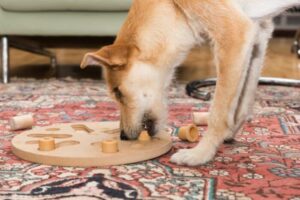
Add Variety: Keep activities interesting by incorporating a range of exercises and games. Dogs can become bored with the same routine, so change it up to keep their interest.

Include More Dogs: Arrange playdates with other dogs to foster social connection and provide an outlet for your dog’s energy. Off-leash dog parks can be great locations for your dog to mingle and have fun.

Toys and Puzzles: Purchase interactive toys and puzzle feeders. These toys stimulate your dog’s thinking and can keep them entertained for long periods of time. Physical activity is not as vital as mental stimulation.
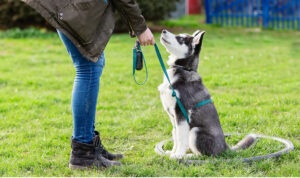
Leash Training: Teach your dog how to walk on a leash properly. Daily walks provide exercise and a change of environment, both of which are important for a dog’s mental health.
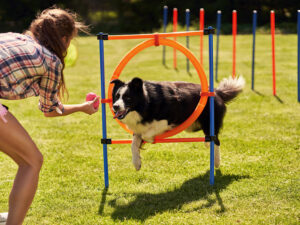
Agility and Obstacle Course Practice: If your dog enjoys agility training, set up a mini-obstacle course in your backyard or enroll in local agility classes. These activities put both the mind and the body to the test.

Consider Professional Training: If you’re having trouble encouraging your dog to be active or if they have behavioral issues, enroll them in professional training programs or talk with a dog trainer.

Be Patient and Consistent: It may take some time to train your dog to be active, especially if your dog is not naturally oriented toward high-energy activities. Be persistent and patient in your endeavors.
Check on Health: Keep an eye on your dog’s health and make sure they’re getting adequate rest. Excessive exercise can result in injury or weariness. Rest days are critical for healing.
Stay Safe: Ensure your dog’s safety during activities by providing proper equipment, such as a sturdy harness and leash. Also, keep extreme weather conditions in mind, such as high heat or cold.
Training your dog to be more active benefits both your physical fitness and the bond you share with your canine companion. You can encourage your dog to live a more active and satisfying life with persistent effort, positive reinforcement, and a strategic approach to their unique requirements and preferences.
FAQs
What are the distinguishing traits of an athletic dog breed?
Athletic dog breeds are characterized by agility, speed, endurance, and physical prowess. Because of their intrinsic qualities, these breeds excel in a variety of athletic activities and sports, and they frequently have a strong work ethic.
Is it possible for any dog to become an energetic dog, or does it depend primarily on the breed?
While any dog can become more active with the correct training and motivation, certain breeds are born with more energy and athleticism. Selecting an energetic breed can make the process easier, but dogs of all kinds can be encouraged to be more active.
What are some frequent health concerns when training an active dog?
It is critical to keep track of your dog’s overall health, including weight, joints, and energy levels. Regular vet visits are essential. Keep an eye out for potential injuries during high-impact activities, and make sure your dog is well hydrated and protected from extreme weather.
How much exercise does an average active dog require?
The quantity of activity required by an active dog varies according on breed, age, and individual traits. Active dogs require at least an hour of physical activity every day on average, but it can be more for particular breeds.
Can I train my dog to be more active if he or she is more laid-back?
Yes, a dog with a laid-back personality can be trained to be more active. Although patience and positive reinforcement are required, gradually introducing exercise and entertaining activities can inspire even the most sedentary dogs to become more active.
Is it vital to keep a dog active by participating in dog sports and agility training?
It is not necessary to participate in dog sports or agility training, but it can be a fun and helpful method to keep your dog active. Regular exercise and playing are frequently enough to keep your dog active and healthy.
How can I keep my dog from overexerting himself?
To avoid overworking your dog, keep an eye out for signs of weariness, excessive panting, or limping. Allow for rest and recovery days, especially if your dog is participating in high-energy activities, and adapt training intensity to meet your dog’s fitness level.
How important is mental stimulation to keeping a dog active?
For a dog to stay active, mental stimulation is just as necessary as physical activity. Puzzle toys, obedience training, and interactive activities stimulate your dog’s thinking and keep him from becoming bored, which can lead to destructive behavior.
Are there any dietary restrictions for active dogs?
Active dogs may have increased caloric needs; therefore, feeding them a balanced diet appropriate for their activity level is critical. Consult your veterinarian about the best type and amount of food for your dog.
Is any breed suitable as a companion for an active lifestyle, or are particular types more suited?
While any breed can be an active lifestyle partner, many breeds are better suited owing to their natural athleticism. It is critical to select a breed that suits your level of activity, but most dogs can become energetic and enjoy a more active lifestyle with devotion and training.
Conclusion
Athleticism in dogs can take many forms, ranging from the agile Border Collie to the quick Whippet. These breeds have distinct characteristics that set them apart in terms of athleticism, endurance, and physical ability. While each of these breeds has its own strengths, they all have a strong link with their human counterparts, making them not only athletes but also beloved family members.
While these breeds are athletically endowed, they also require continuous exercise, mental stimulation, and training in order to be happy and healthy. Before getting a highly athletic breed, think about your lifestyle, activity level, and capacity to provide the necessary care and exercise to keep them in peak condition. These athletic dog breeds can become your most devoted and enthusiastic companions, eager to join you on all your adventures with the proper care and attention.
Dogs are dubbed “man’s best friend” for a reason. Their undying loyalty, unconditional affection, and exceptional social abilities make them the ideal human companions. Some dog breeds stand out in the vast world of dog breeds for their sociability and willingness to connect with people and other animals.
Table of Contents
Introduction
In this detailed study, we will look at the most sociable dog breeds, throwing light on their traits, temperaments, and how they can improve our lives.
Importance of Dog Sociability
Canines’ sociability is a key characteristic that characterizes their capacity to interact constructively with humans, other canines, and other animals. A friendly dog displays friendliness, approachability, and the ability to flourish in a variety of social situations. This priceless trait is widely valued in pets because it not only enhances our lives but also promotes harmonious coexistence within our families and among other pets. Sociable dogs are more likely to exhibit positive behaviors, making them not only easier to teach but also more easily integrated into our daily lives.
Sociability is at the heart of what makes dogs such wonderful companions. This social ability is visible in the way dogs approach their owners, tails wagging and eyes twinkling with adoration, eagerly seeking attention and creating profound emotional ties. They have an extraordinary ability to read and respond to human emotions, assisting in times of joy, tension, or despair. A friendly dog can turn a house into a home, providing warmth and joy to every member of the family.
Furthermore, a sociable dog’s versatility is shown in how they interact with other animals and canines. They have an easy time making friends and creating an environment of camaraderie, playfulness, and social enrichment. In a world where dogs are frequently referred to as “man’s best friend,” this ability to create bonds extends well beyond their human companions, resonating in the peaceful coexistence of pets of diverse types.
Sociability is not only a desirable trait, but it also adds to a well-rounded and well-behaved pet. Sociable dogs are not only easier to train, but they are also less prone to destructive or violent behavior. Their sociable nature makes them more sensitive to learning and reacting to commands, allowing for the establishment of a mutually rewarding relationship between pet and owner.
Top 10 Friendly Dog Breeds
The Golden Retriever

In the dog world, the Golden Retriever is a true symbol of sociability. They are commonly described as one of the most sociable dog breeds due to their affable and friendly demeanor. These dogs make excellent family pets, frequently developing deep ties with all members of the household, including youngsters. Their constant wagging tails and bright, expressive eyes demonstrate their fondness for human interaction.
Because of their capacity to comfort and connect with individuals in need, Golden Retrievers excel in social situations and are frequently regarded as therapy dogs. Their enthusiasm to please makes them ideal training and dog sports companions, adding to their appeal as friendly pets.
The Labrador Retriever

Labrador Retrievers are another breed known for their friendliness. They are well-known for their cheerful demeanor and energetic nature, making them popular with both families and individuals. Labradors thrive on engagement and company, whether with human family members or other dogs.
Labradors’ flexibility goes outside the home, as they are frequently used as guiding dogs, search and rescue dogs, and therapy dogs. Their sociability, paired with their intelligence and trainability, makes them a valuable member of society.
Poodle
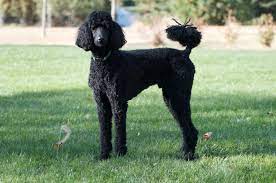
Poodles are frequently associated with elegance and grace, yet their sociability should not be underestimated. These intelligent and highly trainable canines have a good sense of their surroundings and are superb character evaluators. They are recognized for being good character evaluators, taking time to warm up to newcomers but forming deep ties once they do.
Poodles are frequently seen participating in dog sports such as obedience, agility, and even canine dancing, demonstrating their friendly and flexible temperament. They are a breed that thrives on human interaction and affection.
The Pitbull

Bulldogs may not be the first breed that springs to mind when considering friendly dog breeds, but they have their own charm and sociability. They are well-known for being affectionate and laidback. Bulldogs build deep bonds with their families and are frequently referred to as “lap dogs” because they enjoy cuddles and intimate human touch.
Bulldogs are ideal for people who desire a gregarious companion yet live a more relaxed lifestyle. Because of their placid demeanor and desire for human interaction, they make wonderful indoor pets and are ideal for anyone looking for a lower-energy breed.
The Beagle

Beagles are another friendly breed that thrives on human interaction. These dogs are well-known for being friendly and approachable. Their need for social engagement is not limited to their human families; they also get along well with other canines and animals.
Beagles are recognized for their inquisitive and energetic nature, which makes them ideal companions for active families and individuals. Their social personality, combined with their high activity levels, makes them ideal for outdoor adventures and exploration.
Australian Sheepdog
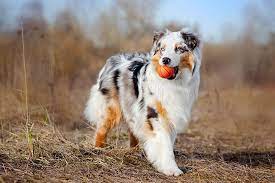
The Australian Shepherd is a breed that is both intelligent and social. They are well-known for their herding instincts, but they are also extremely gregarious animals. These dogs enjoy human interaction and being a part of a family. They are commonly referred to as “velcro dogs” due to their proclivity to cling close to their owners.
Australian Shepherds are not only amiable but also highly versatile, making them ideal for a variety of activities ranging from hiking to agility training. Their devotion and desire to please others enhance their sociability, making them great friends in a variety of circumstances.
The German Boxer

German Boxers are noted for their vivacity and friendliness. These dogs are excellent family companions due to their sociability and protective tendencies. They are well-known for their lively and friendly attitude toward their human family members, making them ideal companions for busy households.
German Boxers are also recognized for their social relationships with other dogs and animals, which makes them an excellent choice for individuals who have many pets. Their lively disposition lends itself nicely to training and many canine sports, boosting their sociability.
The Dachshund

Dachshunds are petite in height but great at sociability. These adorable tiny dogs create strong ties with their owners and are well-known for their friendly personalities. They enjoy socializing with people of all ages and enjoy being a part of the family.
Dachshunds have a strong sense of loyalty and a protective temperament, making them excellent watchdogs. Despite their size, they are brave and gregarious dogs who enjoy being the focus of attention.
Shih Tzu

Shih Tzus are known for being gregarious and friendly. These little canines are well-known for their friendly personalities and willingness to be near people. They thrive on social interaction and are frequently regarded as excellent companions for seniors and families.
Shih Tzus may need some grooming, but their friendly and agreeable disposition makes them an excellent addition to any home. Their pleasant demeanor and adaptability have made them popular pets for many years.
The American Boxer

Another breed recognized for its friendliness is the American Boxer. These dogs frequently stand out for having playful and vivacious personalities, which makes them excellent companions for families and people who are active. Boxers are highly social animals who appreciate being a part of a family.
Boxers are an excellent choice for anyone looking for a sociable and well-behaved companion because they are amiable, versatile, and easy to train. Their loyalty and caring temperament make them treasured family members.
Impact of Breeding and Training
Sociability in dogs is not entirely determined by breed. While certain dog breeds are more friendly than others, it’s important to remember that each dog is an individual with its own personality. The importance of breeding, upbringing, and training in forming a dog’s behavior cannot be overstated. Socialization and training, regardless of breed, are critical to fostering a dog’s sociability.
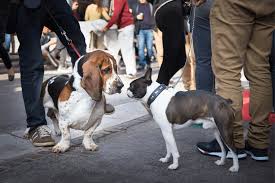
Socialization and Early Exposure: Early socialization is the cornerstone of a sociable dog. Dogs must be exposed to a diverse range of people, animals, settings, and experiences during a vital formative stage of their puppyhood. Early exposure helps kids become well-adjusted and less prone to react fearfully or aggressively in strange settings. Puppies who are exposed to a variety of stimuli grow up to be self-assured and gregarious adults.

Consistent Training: Training is an extremely effective method for improving sociability. Proper training methods assist dogs in understanding expectations, responding to commands, and developing beneficial behaviors. It is critical to remember that consistency is essential. Dogs thrive on structure and repetition, and consistent training lays the groundwork for social behavior.

Reward Based Training: Positive rewards training strategies work especially effectively with sociable dogs. Rewarding desired behaviors with treats, praise, and affection encourages these behaviors to be repeated. This method builds trust and collaboration between the dog and its owner, resulting in a strong attachment that reinforces friendliness.
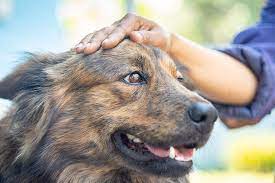
Behavioral Training: Dogs may exhibit behavioral disorders such as excessive barking, jumping on humans, or hostility in some circumstances. Professional assistance from a trained dog trainer or behaviorist can be quite beneficial in resolving these specific issues. These professionals use approaches that are adapted to the needs of each particular dog, assisting them in overcoming obstacles and becoming more friendly.

Exercise and Mental Stimulation: Because sociable dogs have high energy levels, they require regular exercise and mental stimulation. Physical and cerebral stimulation is provided by activities such as walks, games, and puzzle toys. Exercise not only helps them maintain their health, but it also reduces anxiety and restlessness, which improves their sociability.

Patience and Time: Training a friendly dog takes time and patience. Dogs learn at their own rate, and consistency is essential for obtaining desired habits. Celebrate minor triumphs along the way, and keep in mind that the journey of training and socialization is ongoing as dogs learn and adapt throughout their lives.
Dog Breeds That Are Sociable In Specific Roles
Beyond being cherished family pets, sociable dogs perform crucial roles in different parts of society, improving the lives of individuals and benefiting the community as a whole.
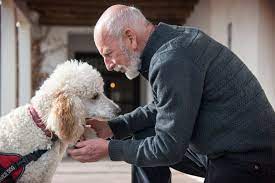
Therapy Dogs: Therapy dogs are taught to provide comfort and emotional support to people in need. Their presence gives comfort and relief in hospitals, nursing homes, schools, and disaster-stricken places. Due to their calm, pleasant, and easygoing nature, breeds such as Golden Retrievers, Labradors, and Poodles excel at this job. Their social demeanor aids in stress reduction and recovery.
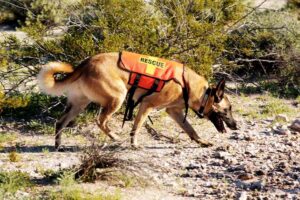
Search and Rescue Dogs: Search and rescue dogs are critical in locating missing people, especially in difficult and dangerous situations. These dogs demand a high level of friendliness as well as hard training. German Shepherds, Border Collies, and Labradors are selected for their sociability and aptitude to work well with their handlers and other team members. Their cooperative nature and deep human relationships make them invaluable in search and rescue efforts.
Note: There might be affiliate links mentioned here. We may receive a commission if you purchase a product through an affiliate link. There is no additional charge for you. Please do your own research before making any online purchases.
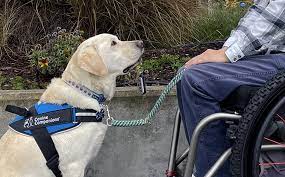
Assistance Dogs: Guide dogs for the visually impaired, hearing dogs for the deaf, and service dogs for people with disabilities all require a high level of sociability. They must communicate well with their human partners and execute commands precisely.
Breeds such Labrador Retrievers, Golden Retrievers, and German Shepherds are preferred because of their social and trainable temperaments, making them suitable for these important responsibilities that improve the freedom and quality of life of people with disabilities.
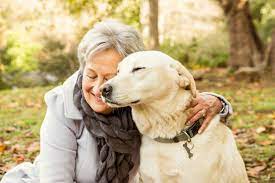
Canine Friends for the Elderly: Canine friends for the elderly play an important role in giving emotional support as well as assistance with everyday tasks. These dogs must be friendly and adaptable to a variety of living settings, providing company as well as a sense of security. Shih Tzus, Dachshunds, and Beagles are popular choices for this purpose because of their amiable and adaptive disposition, which is well-suited to the special needs of senior folks.
Suggestions for Socialization of Dogs
To guarantee that friendly dog breeds are well-behaved and receptive to orders, training is vital. Training is essential, whether you want to welcome a new social dog into your home or enhance the behavior of your current pet. Here are several important factors in socializing dogs:
Early Socialization: From an early age, socialize your dog by introducing them to a variety of people, situations, and animals. This assists kids in being well-adjusted and less prone to showing fear or hostility in unexpected environments.
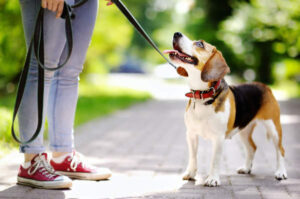
Obedience Training: Basic commands and excellent manners must be taught to your dog through obedience training. With friendly dogs, positive reinforcement strategies such as cookies and praise work effectively. In training, consistency is essential.

Positive Rewards: With friendly dog breeds, reward-based training approaches are quite effective. Treats, praise, and affection should be used to reward positive conduct. This positive reward motivates your dog to perform the desired behavior again and again.
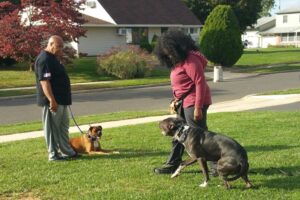
Behavioral Training: Seek professional advice from a certified dog trainer if your friendly dog develops any behavioral concerns, such as excessive barking or leaping on people. They can assist in addressing specific issues and providing specialized solutions.

Exercise and Mental Stimulation: Due to their high energy levels, sociable breeds require both physical exercise and mental stimulation. Regular walks, playtime, and puzzle toys can all contribute to your dog’s happiness and well-being.

Establish Consistent Rules and Boundaries: For your dog to follow, establish consistent rules and boundaries. This gives your dog a sense of structure and helps them grasp what is expected of them.

Patience and Time: It takes time and patience to train a social dog. Maintain consistency in your efforts, and keep in mind that each dog learns at their own speed. Small triumphs along the way should be celebrated.
FAQs
What exactly is sociability in dogs?
The ability of dogs to interact favorably with humans, other dogs, and other animals is referred to as sociability. It includes friendliness, approachability, and the ability to thrive in a variety of social situations.
Why is dog sociability important?
Dog sociability enriches our lives and promotes peaceful cohabitation within households and among different pets. Sociable dogs exhibit positive behaviors and are easy to train, allowing them to be easily incorporated into daily life.
What effect do friendly dogs have on our emotions and well-being?
Dogs with sociability have an extraordinary capacity to read and respond to human emotions. They give us support, comfort, and joy when we are happy, stressed, or unhappy, making our lives more emotionally meaningful.
Do social dogs get along with other animals?
Yes, friendly dogs build ties and interact well with other animals, including other dogs and pets of different species, fostering a happy atmosphere.
Can socialization and training aid in the socialization of less sociable breeds?
Without a doubt, socialization and training play an important role in developing a dog’s behavior. Even less sociable breeds can become well-adjusted and sociable dogs with early exposure and regular training.
Which dog breeds are the most social?
The Golden Retriever, Labrador Retriever, Poodle, Bulldog, Beagle, Australian Shepherd, Boxer, Dachshund, Shih Tzu, and Boxer are among the most friendly dog breeds. These breeds are well-known for being amiable and versatile.
What are some of the social roles that dogs perform in society?
Therapy dogs, search and rescue dogs, assistance dogs (e.g., guide dogs, hearing dogs, service dogs), and companions for the elderly are all examples of sociable dogs in action. Their friendliness improves people’s lives and enriches the community.
How can I teach my outgoing dog to be obedient?
Early socialization, obedience training, positive reinforcement, and the establishment of regular norms and boundaries are all part of training a friendly dog. When dealing with certain behavioral issues, it is best to seek expert help.
What are the difficulties in teaching sociable dogs?
Because each dog learns at their own pace, training a friendly dog may require patience and time. Training success requires consistency and positive reinforcement.
What are the long-term effects of sociable dogs on our lives and society?
Sociable dogs form long-lasting friendships, improve our emotional well-being, and play critical roles in many parts of society. They continue to demonstrate why they are renowned as “man’s best friend” and have a good impact on the planet.
Conclusion
Sociable dogs have an exceptional ability to interact with people, improving our lives with their devotion, loyalty, and welcoming demeanor. These dogs are available in a variety of breeds and sizes, providing a diverse range of possibilities for people looking for a social canine companion.
Sociable dogs improve the lives of individuals and society as a whole, from family pets to working canines in numerous critical jobs. Their undying love, devotion, and social abilities form lifelong bonds, reminding us why dogs truly earn the moniker “man’s best friend.”
Pets are more than simply animals; they are valued members of our households. Whether you have a devoted dog, a graceful cat, a chatty parrot, or any other type of pet, their well-being and happiness are paramount. Pets, like humans, require certain supplies and consumables to live healthy and comfortable lives.
Table of Contents
Introduction
For thousands of years, dogs have been man’s faithful companions, yet not all canines are made equal when it comes to obedience. While any dog may be trained to some extent, certain breeds are more naturally predisposed to obey their owners and pleasure them.
These dog breeds are well-known for their intelligence, devotion, and ability to swiftly understand and execute numerous orders. In this detailed article, we will look at the top 20 smartest and most obedient dogs, their distinguishing features, and what makes them perfect companions for individuals who value obedience and discipline in their dogs.
20 Most Obedient Dog Breeds
Here are the smartest and most obedient dog breeds you can choose from to adopt.
The Border Collie

Origin: Scotland is the country of origin.
Size: Medium size
Temprament: Intelligent, energetic, and agile temperament
Border Collies are sometimes referred to as the “Einsteins” of the canine world, due to their exceptional intelligence and desire to work. These dogs, which were originally bred as herding dogs, excel in obedience training and counted as one of the most trainable dog breeds. Their attentiveness, desire, and ability to quickly understand and execute directions make them an excellent choice for dog owners looking for a trainable and obedient breed.
German Shepherd Dog

Origin: Germany is the country of origin.
Size: Large size
Temperament: Loyal, brave, and intelligent
German Shepherds are well-known for their outstanding obedience and adaptability. They are frequently used as working dogs for police, search and rescue, and service animals. Their intelligence and strong work ethic enable them to be quick learners and outstanding command followers. German Shepherds are also noted for their devotion and protectiveness.
The Golden Retriever

Origin: United Kingdom
Size: Large size
Temprament: Friendly, intelligent, and gentle temperament
Golden retrievers are well-known for their calm and friendly demeanor, making them one of the most popular family dogs. Because of their intelligence and enthusiasm to please their masters, they are highly obedient and simple to train. Because of their outstanding disposition, they excel in a variety of dog sports and are frequently used as therapy dogs.
Retriever, Labrador

Origin: The country of origin is Canada.
Size: Large size
Temprament: Outgoing, even-tempered, and gentle temperament
Labrador Retrievers, like their golden cousins, are extremely obedient and easy to train. They are noted not only for their intelligence but also for their amiable and gregarious demeanor. Labs thrive in a variety of dog sports, including obedience and agility. As one of the most obedient dog breeds and because of their adaptability and dependability, they are often chosen as support dogs.
Poodle

Origin: Germany (Standard Poodle) and France (Miniature and Toy Poodle) are the countries of origin.
Size: Various sizes (standard, miniature, toy)
Temprament: Intelligent, alert, and active temperament
Poodles are noted for their intelligence and enthusiasm to learn in all sizes. Because of their ability to execute sophisticated tricks and follow orders, they make ideal candidates for obedience training and are frequently utilized in dog exhibitions. Poodles are also well-known for their hypoallergenic coats and little shedding.
Doberman Pinscher

Origin: Germany is the country of origin.
Size: Large size
Temprament: Alert, fearless, and energetic temperament
Doberman Pinschers are noted not only for their sleek and threatening appearance but also for their exceptional obedience and loyalty. They are eager to pick up new skills and thrive at obedience training. They are reputed to be one of the most trainable dog breeds. Because of their protective instincts and obedience, they make ideal guard dogs and family guardians.
Scottish Sheepdog

Origin: Scotland is the country of origin.
Size: Small to Medium Size
Temprament: Intelligent, energetic, and playful temperament
Shetland Sheepdogs are often referred to as “miniature collies” because they are highly clever and eager to please, making them simple to train. Being one of the most obedient dog breeds, these dogs perform admirably in agility and obedience competitions. Because of their tiny size and loving disposition, they are excellent companions for families looking for an obedient and fun dog.
Australian Sheepdog

Origin: Despite the name, the country of origin is the United States.
Size: Medium size
Temprament: Intelligent, energetic, with a herding instinct
Australian Shepherds, despite their name, originated in the United States, where they were initially utilized as herding dogs. Because of their intelligence, agility, and strong work ethic, they are ideal candidates for obedience training. Their striking coat colors and patterns also serve to distinguish them.
Rottweiler

Origin: Germany is the country of origin.
Size: Large size
Temprament: Loyalty, Confidence, and Fearlessness
Rottweilers have a rough demeanor, yet they are also very trainable and obedient dogs. Their devotion to their owners is unparalleled, and they may be extremely protective. Rottweilers make ideal companions for families looking for a powerful and obedient pet when properly trained.
Aussie Cattle Dog

Origin: Australia is the country of origin.
Size: Medium size
Temprament: Energetic, intelligent, and alert temperament
The herding instincts and strong activity levels of Australian Cattle Dogs are well known. When given constant instruction and mental stimulation, their intellect and quick learning ability make them incredibly obedient. They are outstanding worker dogs who excel in a variety of canine activities.
Malinois de Bruxelles

Origin: Belgium is the country of origin.
Size: Medium size
Temprament: Loyal, protective, and intelligent temperament
Because of its high level of obedience, intellect, and protective instincts, the Belgian Malinois is frequently used in police enforcement and the military. They are one of the smartest and most obedient dogs and quick learners who excel in a variety of training exercises, including obedience and agility.
Papillon

Origin: France is the country of origin.
Size: Small in size
Temprament: Alert, friendly, and energetic temperament
Papillons are petite, intelligent canines with enormous personalities. They are extremely trainable and are frequently seen competing in dog sports and obedience events. Because of their attentiveness and agility, they are rapid learners and excellent companions for active families.
Corgi Pembroke Welsh

Origin: Wales is where it all began.
Size: Small in size
Temprament: Intelligent, alert, and kind temperament
Although Pembroke Welsh Corgis are modest in stature, they have enormous hearts and even bigger brains. Because of their intelligence and obedience, they are ideal candidates for training and obedience competitions. Their pleasant demeanor makes them ideal household pets.
Schnauzer miniature

Origin: Germany is the country of origin.
Size: Small in size
Temprament: Alert, spirited, and friendly temperament
Miniature Schnauzers are well-known for their characteristic beard and brows, but they are also extremely obedient and trainable dogs. They perform well in obedience training and can make excellent companions for families looking for a petite, alert, and clever breed.
Border Collie

Origin: United Kingdom
Size: Small in size
Temprament: Affectionate, alert, and energetic temperament
Border Terriers are little but get considered one of the smartest and most obedient dogs. They have a cheerful demeanor and are quick learners, making them ideal for obedience training and as family pets. Because of their intense hunting instincts, they require cerebral stimulation as well as physical training.
King Charles Cavalier Spaniel

Origin: United Kingdom
Size: Small in size
Temprament: Affectionate, gentle, and gracious temperament
Cavalier King Charles Spaniels are well-known for their gentle temperament and grace, but they are also quite trainable. Because of their want to comply and mild disposition, they make good candidates for obedience training. Being one of the most trainable dog breeds, they make excellent pets for singles or families looking for a little, faithful companion.
Mountain Dog Bernese

Origin: Switzerland is the country of origin.
Size: Large size
Temprament: Affectionate, gentle, and strong temperament
Bernese Mountain Dogs are huge, but they are gentle giants who want to please their owners. Their intelligence and obedience make them trainable and dependable pets, especially for families looking for a dependable canine companion.
Staffordshire Terrier (American Staffordshire Terrier)

Origin: United States of America
Size: Medium size
Temprament: Confident, good-natured, and courageous temperament
American Staffordshire Terriers are known for their bravery and confidence, but when properly trained, they are also quite obedient. When properly socialized and trained, their loyalty and intelligence make them wonderful family dogs.
Setter from Ireland

Origin: Ireland is the country of origin.
Size: Large size
Temprament: Outgoing, energetic, and intelligent temperament
Irish Setters are well-known for their bright red coats and boisterous personalities, but they are also extremely trainable. Because of their intelligence and eagerness to work, they are excellent candidates for obedience training and canine sports.
The Shiba Inu

Origin: Japan is where it all began.
Size: Small to Medium Size
Temprament: Alert, charming, and spirited temperament
Shiba Inus are known for their lively personalities, but they are also incredibly clever and trainable. Because of their independence, they can be difficult to teach, but with the appropriate approach, they can be obedient and well-behaved pets for experienced owners.
Note: There might be affiliate links mentioned here. We may receive a commission if you purchase a product through an affiliate link. There is no additional charge for you. Please do your own research before making any online purchases.
How to Choose the Most Obedient Dog Breed

Choosing the most obedient dog breed is a big decision that depends on a lot of criteria. Consider the following steps to make an informed decision about choosing the smartest and most obedient dogs for your family:
Evaluate Your Lifestyle: Take a serious look at your way of life. Do you prefer an active lifestyle that includes outside activities, or do you prefer a more calm home environment? Your daily routine, exercise level, and living situation can all have an impact on the breed you choose.
Size: Consider how large a dog you can easily accommodate in your living environment. Larger dogs often demand more exercise and room, but smaller breeds can live in apartments.
Family Needs: If you have a family or live with additional pets, think about their needs as well. Some breeds are better suited to families with children, while others may be better suited to single people or couples.

Allergies :If anyone in your household suffers from allergies, you should look at hypoallergenic breeds that shed less dander.

Temperament: Find out about the temperament of the breed. The innate characteristics of the breed frequently determine obedience. Some breeds, for example, are noted for their intelligence and readiness to please, while others are more independent or stubborn.

Training Commitment: Be truthful about your capacity and willingness to train. Even the most trainable dog breeds require regular training, socializing, and mental stimulation.

Energy Level: Consider the energy level of the breed. High-energy dogs may require more exercise and mental stimulation, whereas low-energy dogs may require less activity.

Breed-Specific Traits: Some breeds have unique characteristics, like herding or hunting tendencies. Check that these characteristics match your lifestyle and expectations. A breed with strong herding characteristics, for example, may attempt to herd family members or other pets.
Health History: Consider the breed’s frequent health issues and whether you are financially prepared for potential medical bills.

Local Shelter: Don’t forget to think about adopting a dog from a breed-specific rescue or a local shelter. Well-behaved and loving dogs are frequently available for adoption.

Meet the Breed: Spend time with dogs of the breed you’re thinking about getting. Visit breeders, go to dog events, or talk to breed owners to obtain a sense of their temperament and demeanor.

Consult a Professional: If you’re not sure which breed is right for you, go to a professional dog trainer or behaviorist. They may offer helpful advice and assist you in selecting the best breed for your needs.

Choosing a Specific Breed: Breeders should be thoroughly researched if you decide to go with a specific breed. Reputable breeders are vital for obtaining a well-bred, healthy, and socialized dog.

Consider Mixed Breeds: Mixed-breed dogs should not be overlooked. Many mixed-breed dogs are extremely obedient and make excellent friends. Adopting a mixed-breed dog from a shelter can also be a fulfilling experience.

Consider the Long Term: Dogs can live for more than a decade. Consider your long-term commitment and whether you are prepared for the duties that come with dog ownership.
FAQs
What makes a dog obedient?
A dog’s obedience depends on a combination of breed characteristics, training, and socialization. Because of their intellect and desire to please, some breeds are inherently more likely to be obedient.
Are very obedient breeds appropriate for new dog owners?
Some extremely obedient breeds are appropriate for first-time owners if they are ready to put in the time and effort to train them. Breeds such as Labrador Retrievers and Golden Retrievers are well-known for their trainability and are frequently suggested for first-time owners.
Do highly trained dogs need more training than other breeds?
While more obedient breeds may learn commands faster, they still require continuous training, socializing, and mental stimulation. The particular dog and its unique requirements determine the amount of training.
Is it possible to train any dog to be obedient?
Although training can enhance obedience in any dog, some breeds are naturally more sensitive to instruction than others. It’s crucial to realize that a dog’s temperament has a significant impact on his or her ability to learn.
What are the difficulties of having a highly obedient dog?
Highly obedient dogs frequently have a lot of energy and require a lot of exercise and mental stimulation. Failure to provide these can result in behavioral issues, even in docile breeds.
Are there any hypoallergenic, well-mannered dog breeds?
Yes, some extremely obedient breeds, such as Poodles and Shih Tzus, are hypoallergenic, which means they shed less dander and are good for allergy sufferers.
Is it possible to educate older dogs to be obedient, or is it better to start with puppies?
While it is simpler to begin training when the dog is young, older canines can still be educated to be obedient. It may take more time and patience, but persistent instruction can help them alter their behavior.
Do well-behaved dogs make good family pets?
Because they are frequently amiable and nice with children, many highly obedient breeds make wonderful family pets. However, it is critical to select a breed that fits your family’s lifestyle and needs.
Is breed-specific rescue a smart way to find a well-behaved dog?
Yes, breed-specific rescues can be a terrific way to find well-behaved dogs. Many of these dogs have been well-trained and are looking for loving homes.
Can mixed-breed dogs be well-mannered?
Mixed-breed dogs can be very obedient. Individual temperament and training have a greater impact on obedience than pure breed. Shelter-adopted mixed-breed dogs can be affectionate and obedient companions.
Conclusion
Not just breed but also socialization, training, and genetics all play a role in determining obedience. Each dog is unique, and you can help your furry buddy become a well-behaved and obedient member of your family by offering love, care, and correct training.
Remember that all dogs require regular exercise, mental stimulation, and social connection as responsible dog owners. Obedience training is only one aspect of raising a canine companion who is happy, healthy, and well-adjusted. The link between you and your dog, whether you choose a highly obedient breed or a mixed-breed rescue, can be one of the most satisfying experiences in life.
Epilepsy is a neurological disorder that affects millions of individuals worldwide. Individuals with epilepsy confront many obstacles on a daily basis, and the unpredictable nature of seizures can have a substantial influence on their quality of life. Seizure response dogs are a great method to improve the lives of those living with epilepsy.
Table of Contents
Introduction
Seizure response dogs are professionally trained canines that provide individuals with essential support and help during and after seizures. We will delve into the world of seizure response dogs in this detailed article, studying their duties, training, advantages, and the incredible influence they have on the lives of people with epilepsy.
Understanding Epilepsy

Before we delve into the world of seizure response dogs, we must first understand epilepsy. Epilepsy is a chronic neurological condition characterized by unprovoked, repeated seizures. Aberrant electrical activity in the brain, which results in seizures, causes a variety of physical and cognitive symptoms. Convulsions, loss of consciousness, muscle jerks, and even altered sensations or emotions are examples.
Epilepsy is a condition that can affect people of all ages, genders, and ethnicities. The etiology of epilepsy is known in some circumstances, such as a head injury or a genetic susceptibility. Many cases, however, remain unexplained, and epilepsy can strike at any time in a person’s life. Managing epilepsy can be difficult, requiring drugs, lifestyle changes, and constant care.
Function of Seizure Response Dogs
Seizure response dogs, often known as epilepsy service dogs, play an important part in the lives of people who have epilepsy. These highly trained dogs are developed and selected expressly for their abilities to provide support and help during and after seizures. Their key responsibilities include:
- Seizure Warning
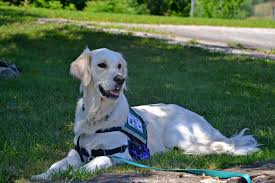
The capacity of epilepsy response dogs to anticipate seizures is one of their most impressive characteristics. While the specific mechanism is unknown, many people with epilepsy report that their dogs can detect an approaching seizure before it occurs. These dogs’ behavior can change, including heightened attentiveness, restlessness, and even licking and nuzzling their owners. This early warning allows those who have epilepsy to choose a safe environment and take preventive steps.
- Support During Seizures
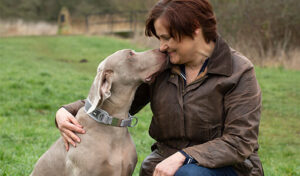
Individuals with epilepsy may experience a variety of symptoms during a seizure, including convulsions and loss of consciousness. During seizures, seizure response service dogs are trained to stay close to their owners, providing physical support and comfort. They may, for example, lie down next to the individual to prevent injury or to provide emotional support during a distressing situation.
- Medication or Assistive Device Retrieval

Many patients with epilepsy rely on medication to keep their condition under control. Some people additionally employ medical equipment such as emergency alarms or communication gadgets. Seizure response dogs can be trained to fetch these items when their owners require them, ensuring quick access to vital equipment that can aid in the efficient management of the disease.
- Post-Seizure Support
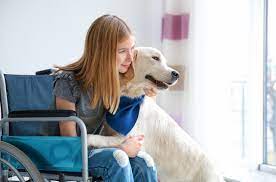
Individuals with epilepsy may feel disoriented, weary, or puzzled after a seizure. Seizure response dogs help by staying near their owners and providing a sense of reassurance. They can also assist by notifying caretakers or medical experts as needed.
- Emotional Assistance
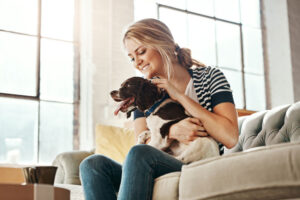
Epilepsy can be difficult emotionally and psychologically. Seizure response service dogs offer unconditional emotional support, assisting their owners in dealing with the stress and anxiety that typically accompany the condition. Their presence can be especially soothing in times of fear or sorrow.
Seizure Response Dog Training
Seizure response dogs are rigorously trained to develop the precise skills needed to assist people with epilepsy. The seizure response dog training process is divided into several important stages:
- Socialization in Childhood

Seizure response dogs are often trained as puppies. Early socialization is crucial for seizure response dog training and ensuring that they grow up to be well-adjusted, confident dogs. They are exposed to a variety of surroundings, people, and situations during this age in order to acquire a calm and adaptable disposition.
- Fundamental Obedience
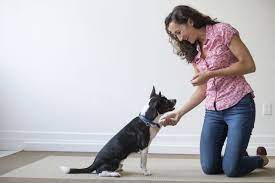
The development of seizure response canines begins with basic obedience training. They learn basic instructions such as sit, stay, come, and heel, which are crucial for their own and their masters’ protection.
- Extensive Training
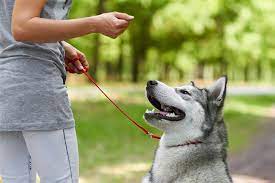
Seizure response dog advanced training entails specialized abilities targeted to the needs of people with epilepsy. This involves identifying and responding to the fragrance or behavioral changes that may precede a seizure.
- Emergency Preparedness Training
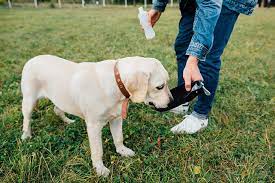
The capacity of epilepsy response dogs to alert their owners to an approaching seizure is one of their most amazing features. This skill is frequently acquired through intensive seizure response dog training, which may include exposure to seizure-related odors or monitoring specific behaviors in epileptics.
- Support Abilities
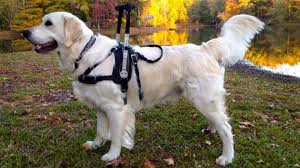
Seizure response dogs are also taught how to provide assistance during seizures. They are trained to stay near their masters, protect them from harm, and provide comfort.
- Retrieval Ability

These dogs are trained to fetch medication, emergency alarms, and other critical objects to aid with post-seizure treatment.
- Training for Public Access
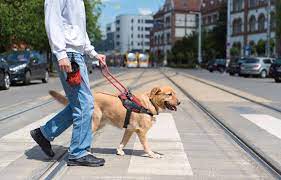
Seizure response service dogs must be well-mannered in a variety of public settings. During seizure response dog training, they learn to navigate congested settings, public transportation, and other environments while staying attentive to their owners.
- Accreditation
Respectable organizations may certify seizure response dogs to provide the highest level of safety and effectiveness. A thorough evaluation of the dog’s skills and conduct, as well as an assessment of the dog-owner team’s ability to operate effectively together, is required for certification.
- Ongoing Training and Upkeep

After certification, training continues. Continuous training and maintenance are required to keep seizure response dogs alert and attentive to the needs of their owners. To sustain their usefulness, skills must be reinforced on a regular basis and exposed to different scenarios.
Advantages of Seizure Response Dogs
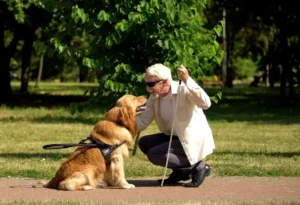
Individuals with epilepsy can benefit from seizure response dogs in a variety of ways. These advantages go far beyond the immediate help they provide during seizures:
- Enhanced Independence
Individuals with epilepsy can acquire more independence with the help of a seizure response dog. These canines can assist their owners with daily duties such as retrieving medication or notifying caregivers when necessary, helping them to live more self-sufficient lives.
- Increased Security
Seizure response service dogs serve an important role in keeping their owners safe during and after seizures. They can help prevent injuries and problems that may occur during a seizure, such as falling or choking.
- Forewarning
Seizure response dogs’ ability to predict seizures provides vital early warning. This not only allows people to prepare for seizures, but it can also help lower the general frequency of seizures, as some people report less seizure activity when they have a responsive canine friend.
- Emotional Assistance
Seizure response dogs provide incalculable emotional assistance. Living with epilepsy can be emotionally draining, but these dogs provide constant company and comfort. Their presence helps alleviate anxiety and despair, and many people find solace in their bond with their four-legged companions.
- Better Quality of Life
Individuals with epilepsy benefit from seizure response dogs’ increased overall quality of life. They provide both practical support and emotional well-being to their owners, allowing them to live more fulfilled lives.
Seizure Alert Dogs vs. Seizure Response Dogs
It is critical to distinguish between seizure response dogs and seizure alert dogs. While the terms are frequently used interchangeably, they refer to various aspects of epilepsy assistance.
- Seizure Response Canines

As stated in this article, seizure response dogs are trained to actively respond to seizures. They provide physical and emotional support during and after seizures, as well as activities such as medicine retrieval and alerting caregivers. These canines are not trained to predict seizures; rather, they are trained to aid when one occurs.
- Alert Dogs for Seizures
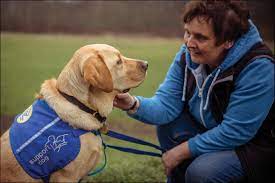
Seizure alert dogs have been specifically trained to detect seizures before they occur. These dogs are thought to have a more acute sense of smell or the ability to detect tiny changes in their owners’ behavior. When dogs detect an oncoming seizure, they may bark, whine, or exhibit certain behaviors to alarm their owners. The purpose is to notify people who have epilepsy to find a safe environment or take preventive actions. It should be noted, however, that not all canines can be trained to predict seizures, and the accuracy of this capacity differs between individuals and dogs.
Legal Considerations and Rights
Individuals who use seizure response dogs or seizure alert dogs are protected by laws in several countries that guarantee their access to public areas and lodgings. The Americans with Disabilities Act (ADA) defines service dogs in the United States as animals that have been properly trained to perform duties for the benefit of people with disabilities. Seizure response and seizure alert dogs are examples of this.
According to the ADA, people with epilepsy have the right to accompany their service dogs in any public setting where pets are typically not allowed. Restaurants, stores, and other public venues are included. These regulations are in place to ensure that disabled individuals have equal access to and opportunities in society.
Individuals with seizure response dogs or seizure alert dogs should be aware of their rights and obligations under their local rules, as the laws governing service dogs differ by nation.
How Much Do Seizure Response Dogs Cost?
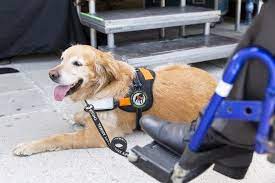
While seizure response dogs bring enormous benefits to people with epilepsy, they are not without cost. The costs of acquiring and caring for a seizure response dog can be high, and those interested in obtaining one should be aware of these financial factors.
- Initial Training Expenses
The cost of purchasing a seizure response dog includes fees for the dog’s first training and certification. Depending on the training organization and the dog’s individual skills, this can range from several thousand to tens of thousands of dollars.
- Ongoing Maintenance and Care
After the dog is certified and put with its owner, there are ongoing expenditures to consider. These include food, veterinarian care, grooming, and other day-to-day expenses. It is critical to budget for the dog’s long-term care and well-being.
- Specialized Tools
Some people may require unique equipment, such as a harness or other supportive gear, for their seizure response dogs. When budgeting for a service dog, these fees should also be considered.
- Transportation and Lodging
Individuals who travel with their seizure response dogs may pay additional transportation and lodging costs. When organizing vacations or outings, it is critical to consider these costs.
- Protection
Seizure response dog insurance may be recommended to cover unexpected medical expenditures or other unanticipated occurrences. Insurance expenses should be factored into the total budget.
It is critical to investigate funding sources and financial assistance programs that may be available to assist with some of these fees. Some organizations and nonprofits may offer financial assistance to people with disabilities who require service dogs.
How to Choose a Seizure Response Dog
Choosing the best seizure response dog is an important decision. To ensure that the dog is well-suited to the individual’s needs and lifestyle, several things should be addressed during the choosing process:
- Organization for Training
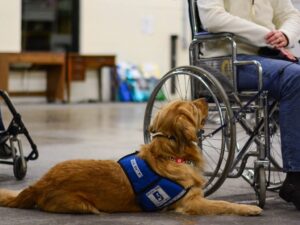
It is critical to select a trustworthy training organization. Look for organizations that have a proven track record of training seizure response dogs and providing owners with continuing support. Investigate their techniques, success stories, and any qualifications they may have.
- Personality and Lifestyle Matching
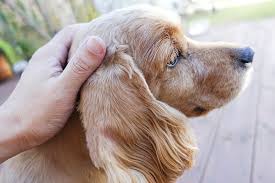
Not all seizure response dogs are the same, so it’s critical to pick one whose attitude and energy level match the owner’s. Some dogs are more energetic and require more exercise, but others are calmer and prefer a quieter household environment.
- Breed and Size

Consider the dog’s size and breed. While there is no one-size-fits-all solution, based on their temperament and trainability, certain breeds are more typically utilized as seizure response dogs. Individual features, on the other hand, should take precedence.
- Education and Certification
Verify that a reputable organization has properly trained and certified the dog. Certification ensures that the dog has the required skills to properly aid people with epilepsy.
- Long-Term Dedication

A seizure response dog requires a long-term commitment that can last a decade or more. Consider the influence on your lifestyle and be prepared to be responsible for your dog’s care for the rest of its life.
Note: There might be affiliate links mentioned here. We may receive a commission if you purchase a product through an affiliate link. There is no additional charge for you. Please do your own research before making any online purchases.
Considerations for Ethical Behavior
While the benefits of seizure response dogs are obvious, there are some ethical concerns to consider. To ensure the well-being and efficacy of these dogs, training and care should be carried out in accordance with the highest ethical standards.
- Appropriate Training Procedures
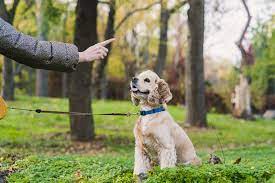
To teach seizure response dogs, training organizations and trainers must employ humane and scientifically based training methods. The core of their instruction should be positive reinforcement and ethical training approaches.
- Breeding with Integrity
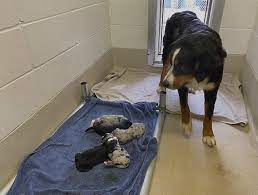
Breeding seizure-response dogs should prioritize the animals’ health and well-being. To limit the possibility of hereditary health disorders and to produce dogs with stable temperaments, ethical breeding techniques should be followed.
- Ongoing Monitoring and Care
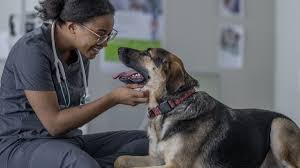
Seizure response dog owners are responsible for providing continuing care, which includes regular veterinary check-ups, correct nourishment, exercise, and mental well-being. These pets’ physical and mental welfare must be prioritized.
- Consent and Limits
Individuals with epilepsy should respect their seizure response dogs’ boundaries. These animals have needs, and agreement is required in all interactions. When a dog is not feeling well, forcing them to do chores or provide emotional support can be damaging.
- General Awareness
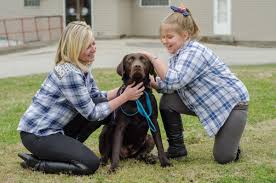
It is critical to educate and raise public knowledge about the functions and rights of seizure response dogs. Understanding the significance of these animals and their functions can help to minimize misconceptions and ensure that their owners can freely access public spaces and lodgings.
FAQs
What exactly is a seizure response dog, and how do they aid people with epilepsy?
A seizure response dog is a specially trained canine that assists and supports people with epilepsy during and after seizures. They can anticipate seizures, aid during seizures, obtain medication or assistive gadgets, assist post-seizure, and provide emotional support.
Seizure response dogs anticipate seizures in what way?
The precise process by which seizure response dogs predict seizures is still being researched and debated. Many people with epilepsy claim that their dogs can detect imminent seizures through changes in behavior, scent, or other subtle signs.
Can seizure response dogs help prevent seizures?
Seizure response dogs are not trained to prevent seizures but rather to aid people who have them. However, their early warning capabilities may assist some people in taking preventive measures or finding a safe area before a seizure occurs.
What are the legal rights of those who have seizure response dogs?
In many countries, including the United States, there is legislation that protects people with seizure response dogs and grants them access to public places and accommodations. For instance, the Americans with Disabilities Act (ADA) specifies service dogs and grants people with disabilities the right to be with their service dogs in public places.
How does one go about getting a seizure response dog?
Typically, obtaining a seizure response dog entails contacting reputable training groups. To match individuals with the correct dog, the procedure may include applications, interviews, and evaluations. Training groups then collaborate with individuals to provide the dog with the appropriate training and certification.
What is the cost of getting and caring for a seizure response dog?
The cost can vary dramatically. The whole cost includes initial training expenditures, continuing care and maintenance, specialized equipment, and possibly insurance. It’s a good idea to look into financing possibilities and financial assistance programs that might be available to help offset some of these costs.
How long does it take to train a seizure response dog?
The length of training depends on the ability of the particular dog, the unique training structure, and the complexity of the abilities necessary. It may take many months to a year to thoroughly train a seizure response dog.
Are seizure response dogs and seizure alert dogs the same thing?
There is a distinction. Seizure response dogs are trained to aid their owners during and after seizures, whereas seizure alert dogs are trained to predict and warn their owners of imminent seizures. These two types of dogs have different skills and training goals.
What ethical concerns should be raised while training and caring for seizure response service dogs?
Humane training methods, appropriate breeding, constant care and monitoring of the dogs’ health, respecting their limits, and developing public knowledge about the duties and rights of seizure response dogs are all ethical factors.
Do seizure response dogs come from certain breeds, or can any breed be taught for this role?
While there is no precise breed requirement, because of their temperament and trainability, certain breeds are more typically utilized for seizure response dog training. Individual qualities and aptitude, on the other hand, are important considerations when selecting a suitable dog for this task.
Conclusion
Seizure response dogs are wonderful friends who play an important role in the lives of people who have epilepsy. They provide a sense of security, independence, and emotional support to their owners, considerably improving their quality of life. These canines enable people to live more full lives despite the problems of epilepsy by alerting to seizures, offering help, and providing steadfast company.
As the area of support animals evolves, it is critical to maintain high ethical standards in the training and care of seizure response dogs. We can continue to harness these dogs’ great potential to enhance the lives of people living with epilepsy by prioritizing their well-being and ensuring that they are treated with respect and care.
Seizure response service dogs are a brilliant example of the significant impact that the human-animal link can have on the lives of those suffering tough health issues in a society where empathy, support, and understanding are so important.





